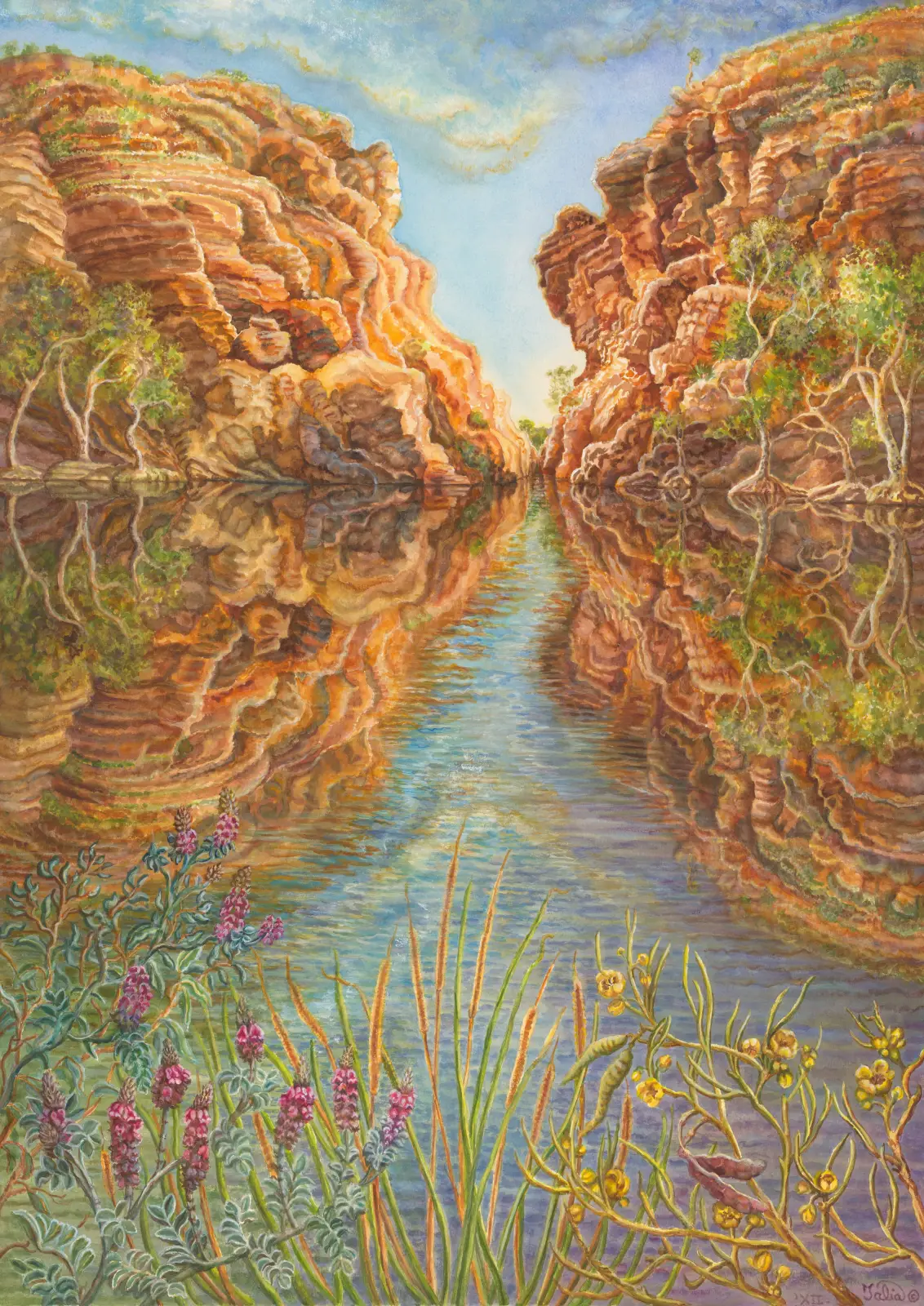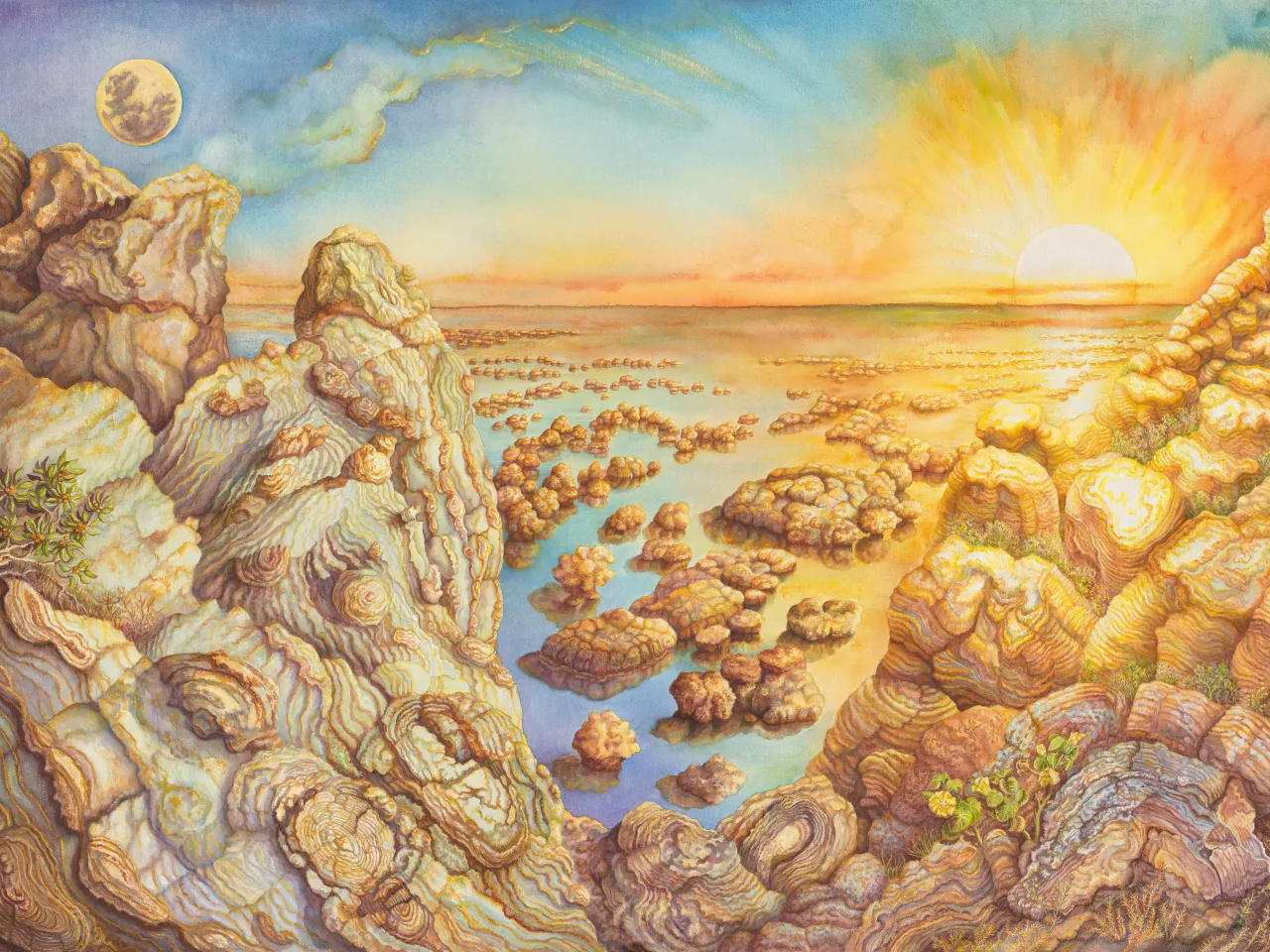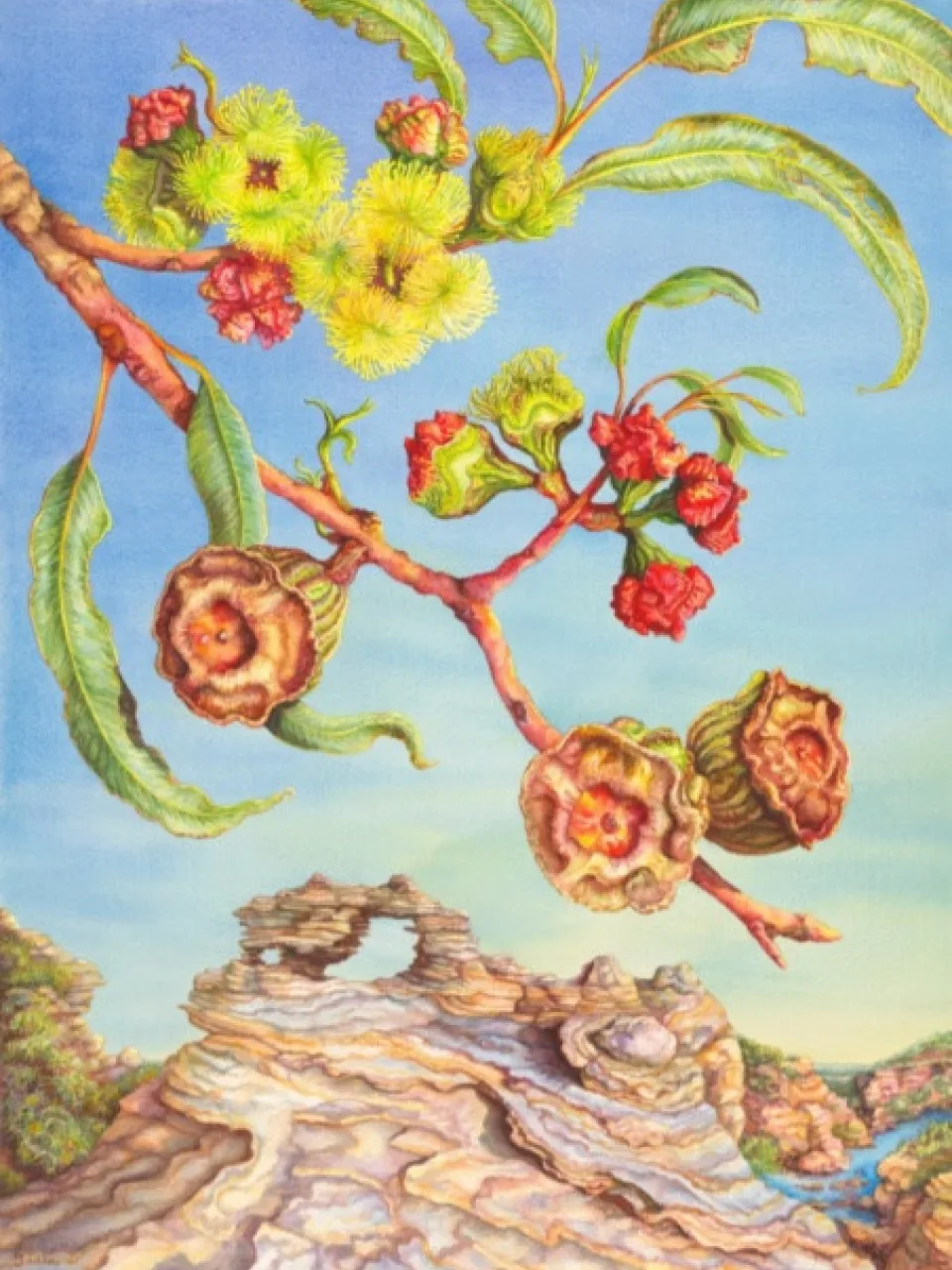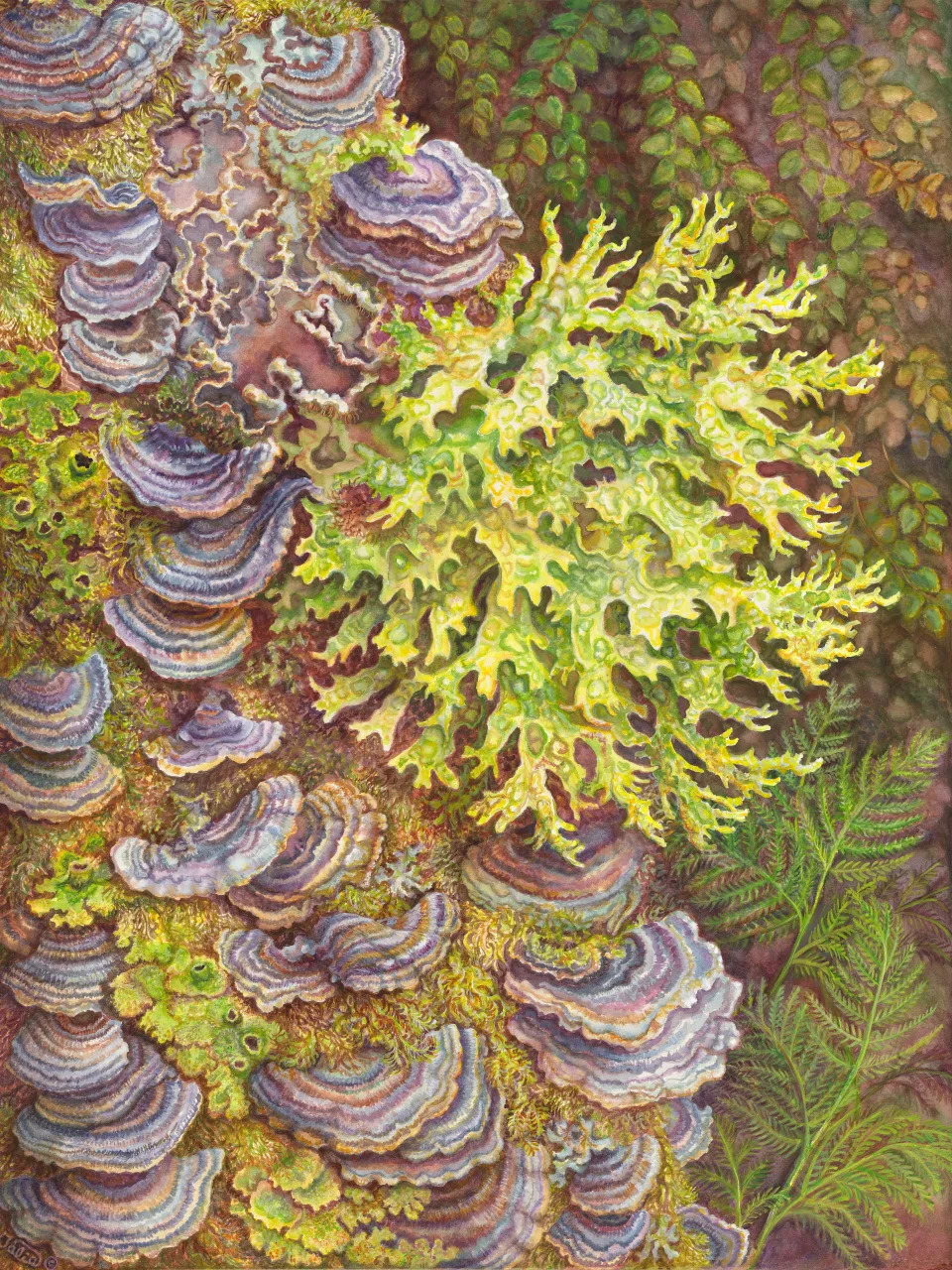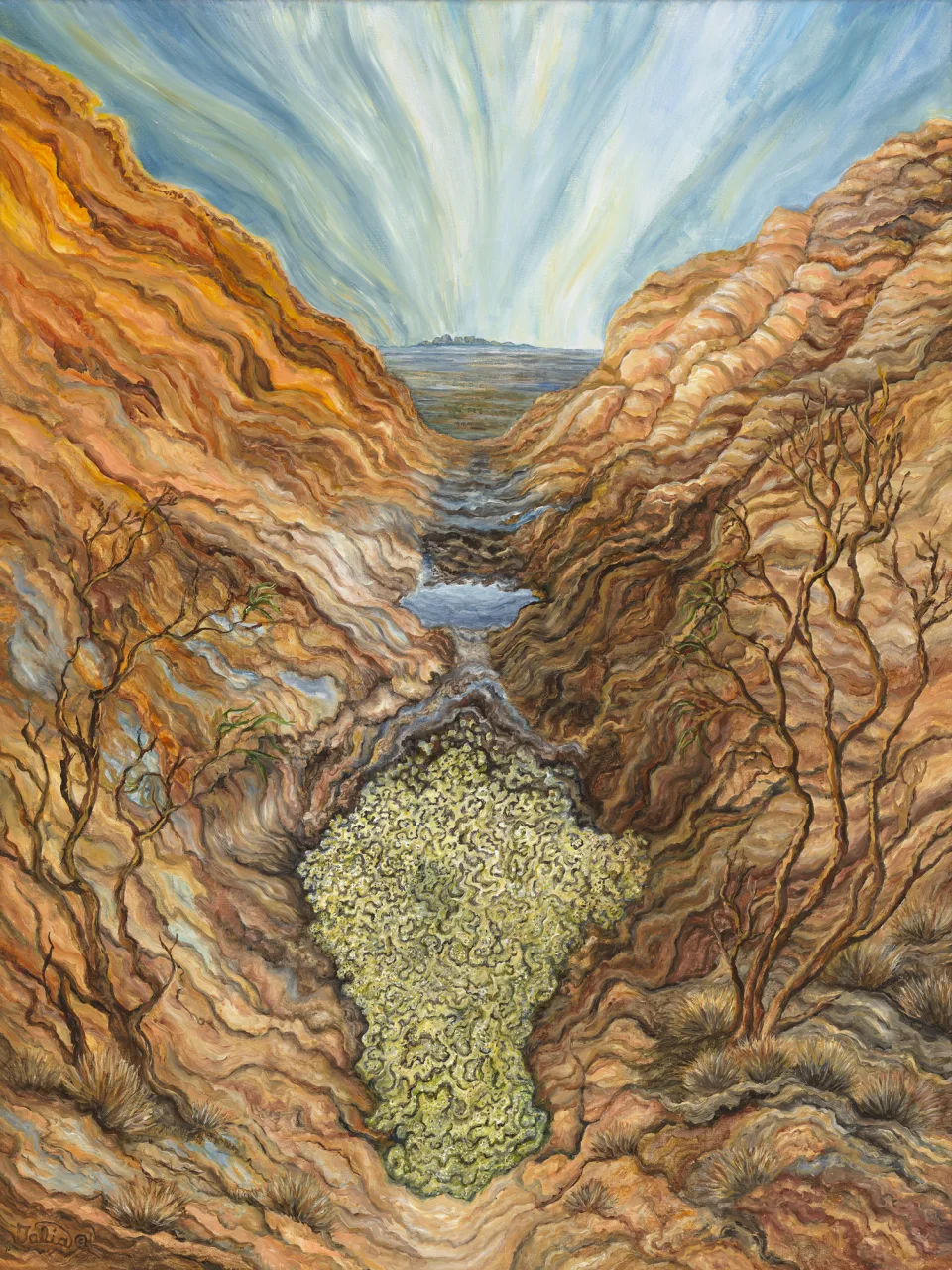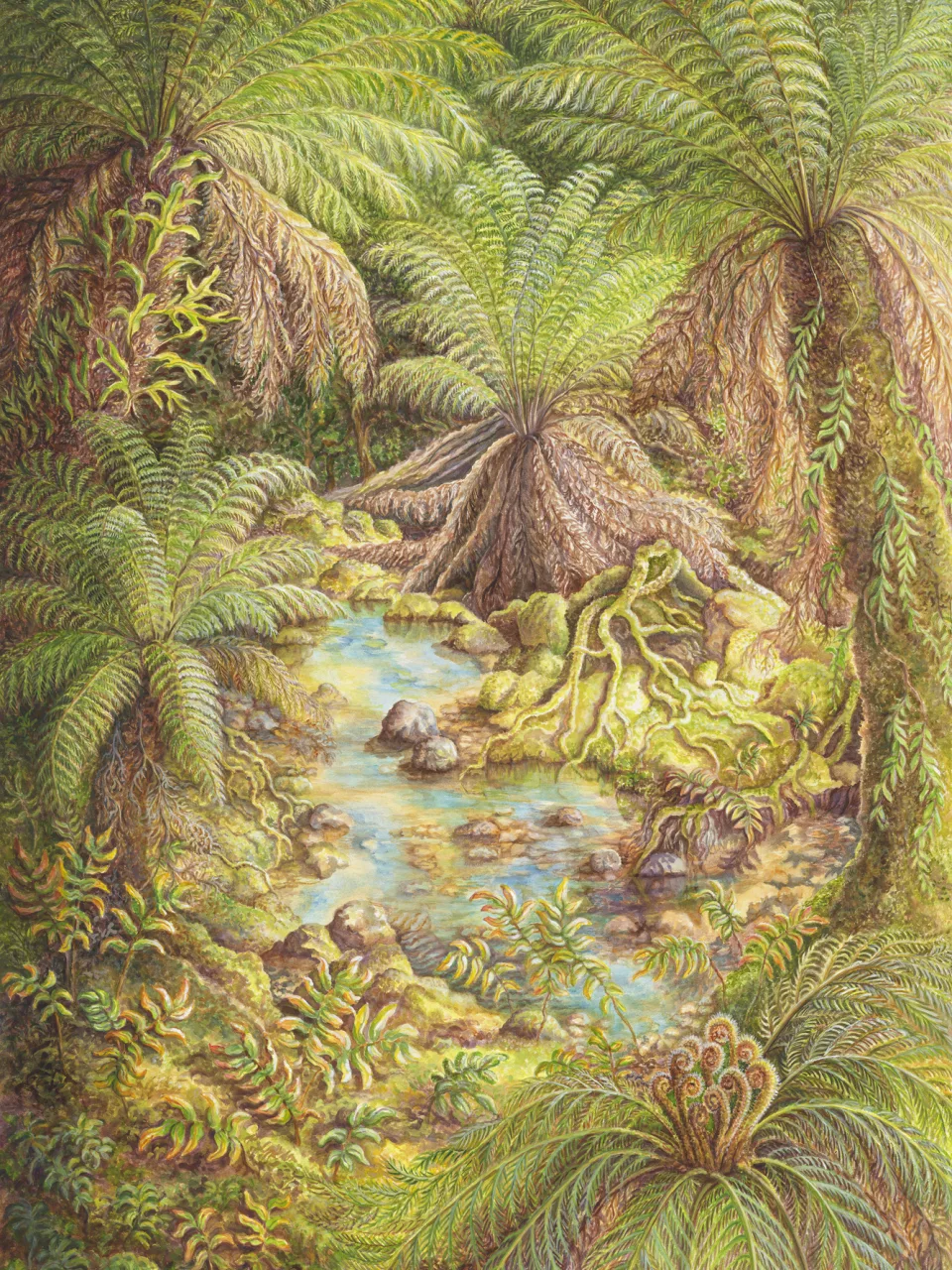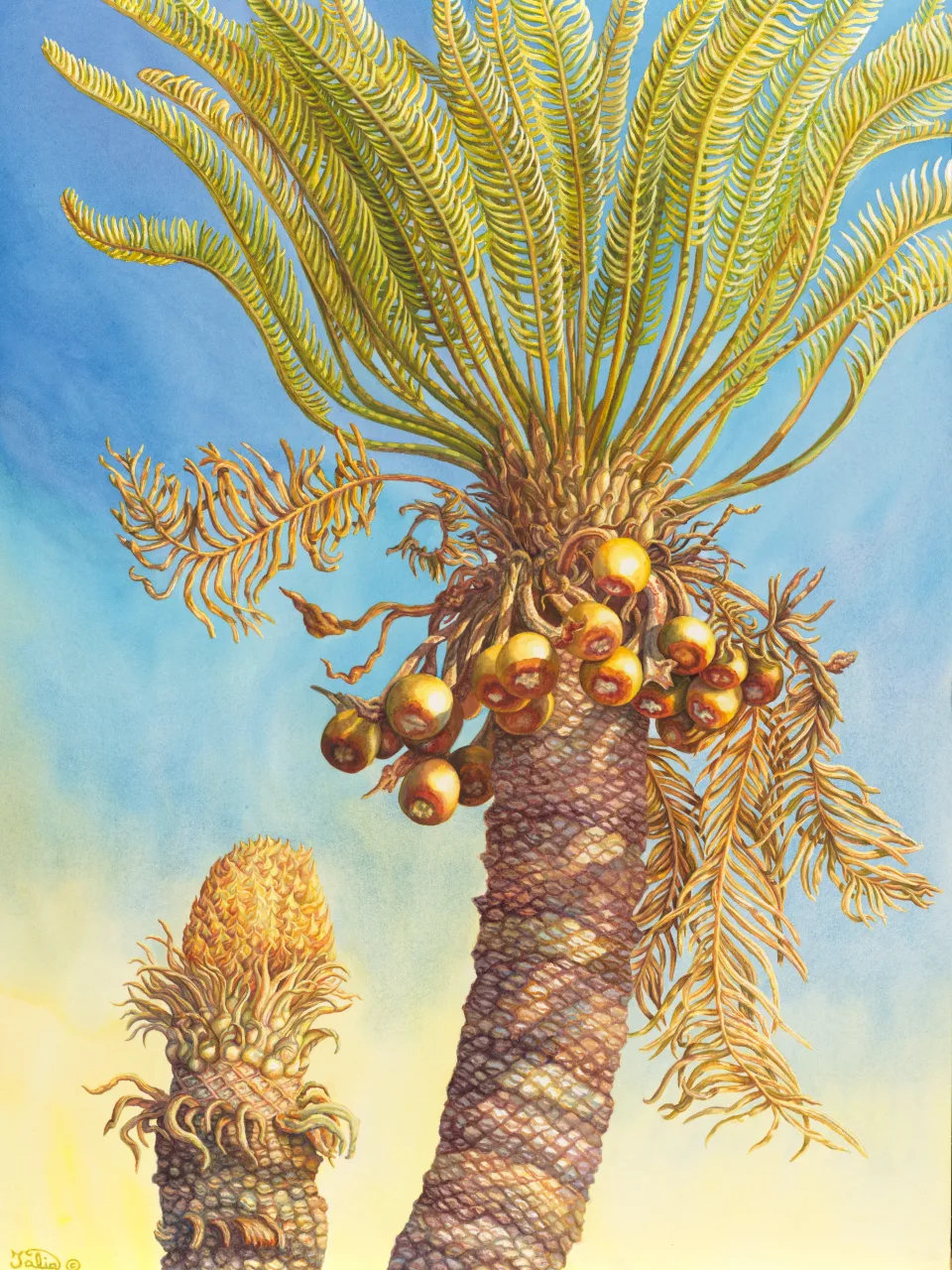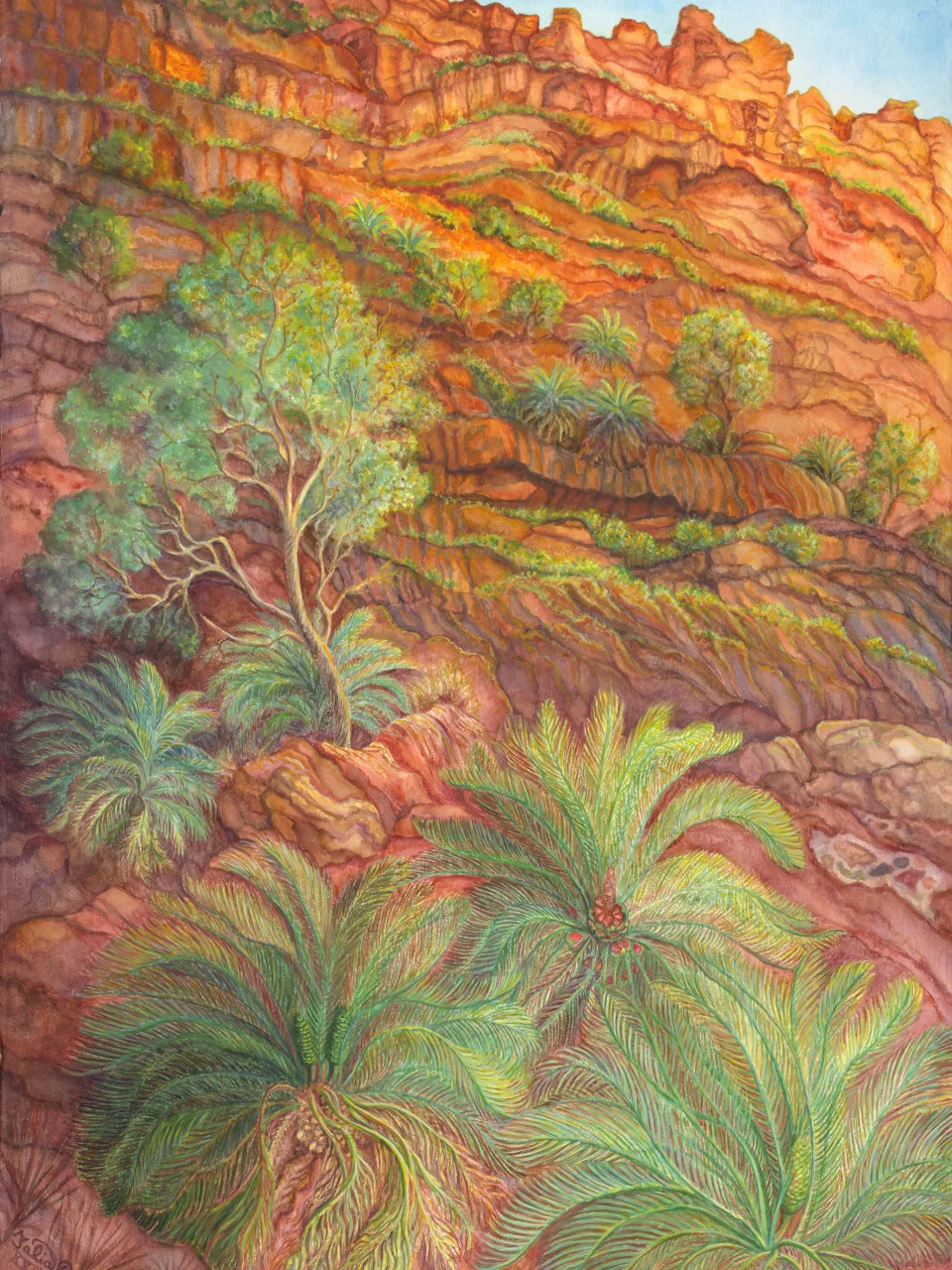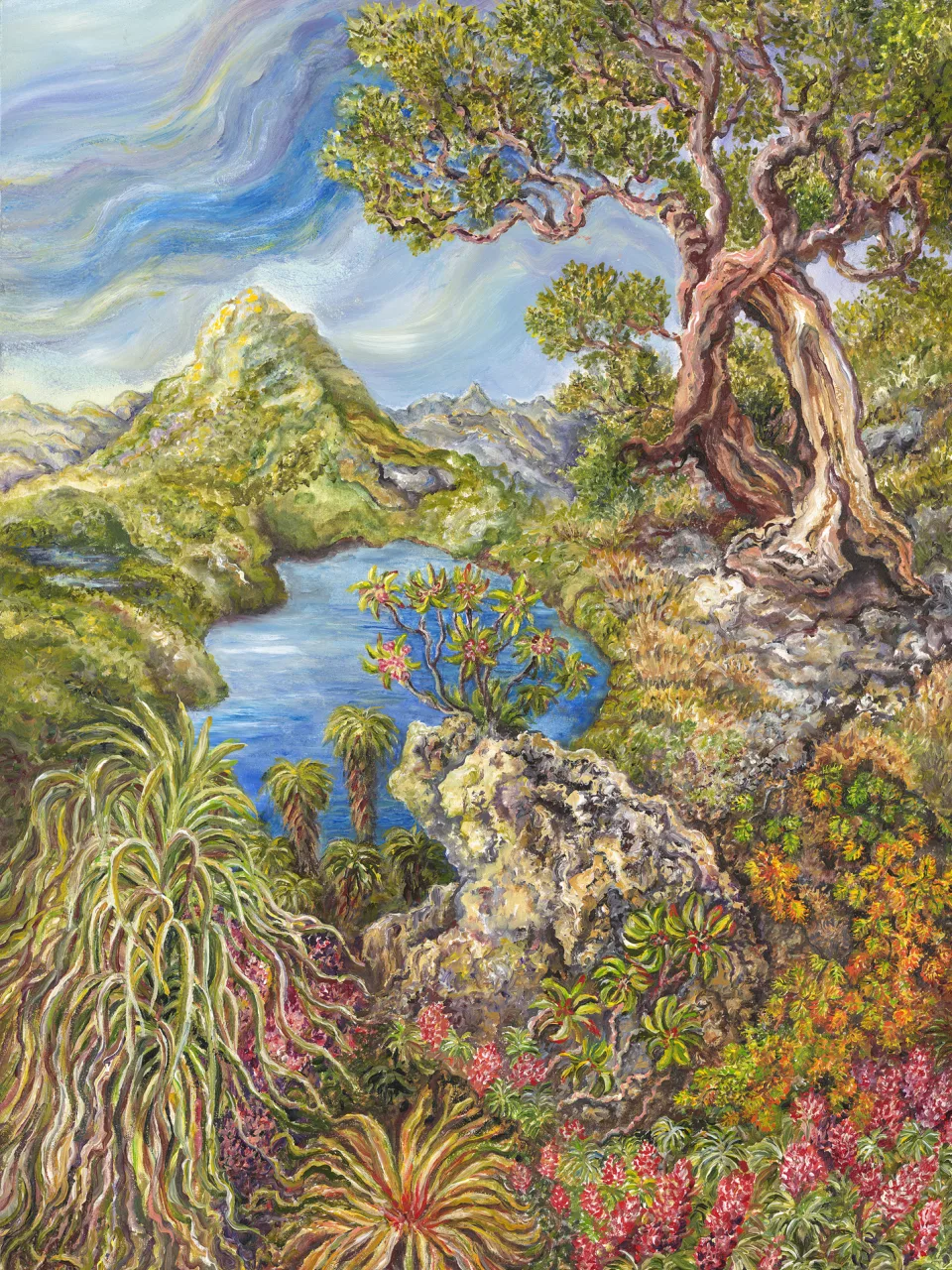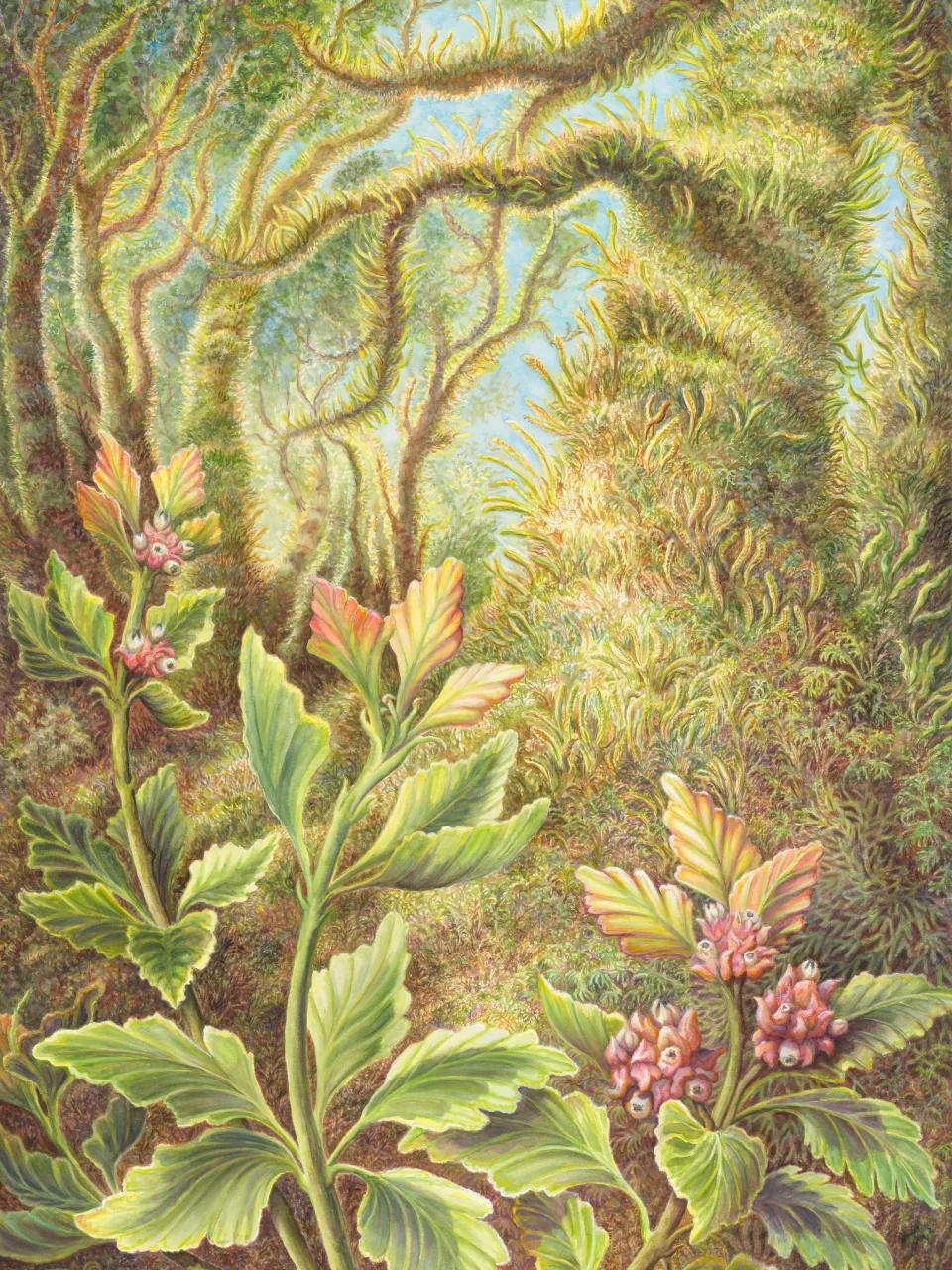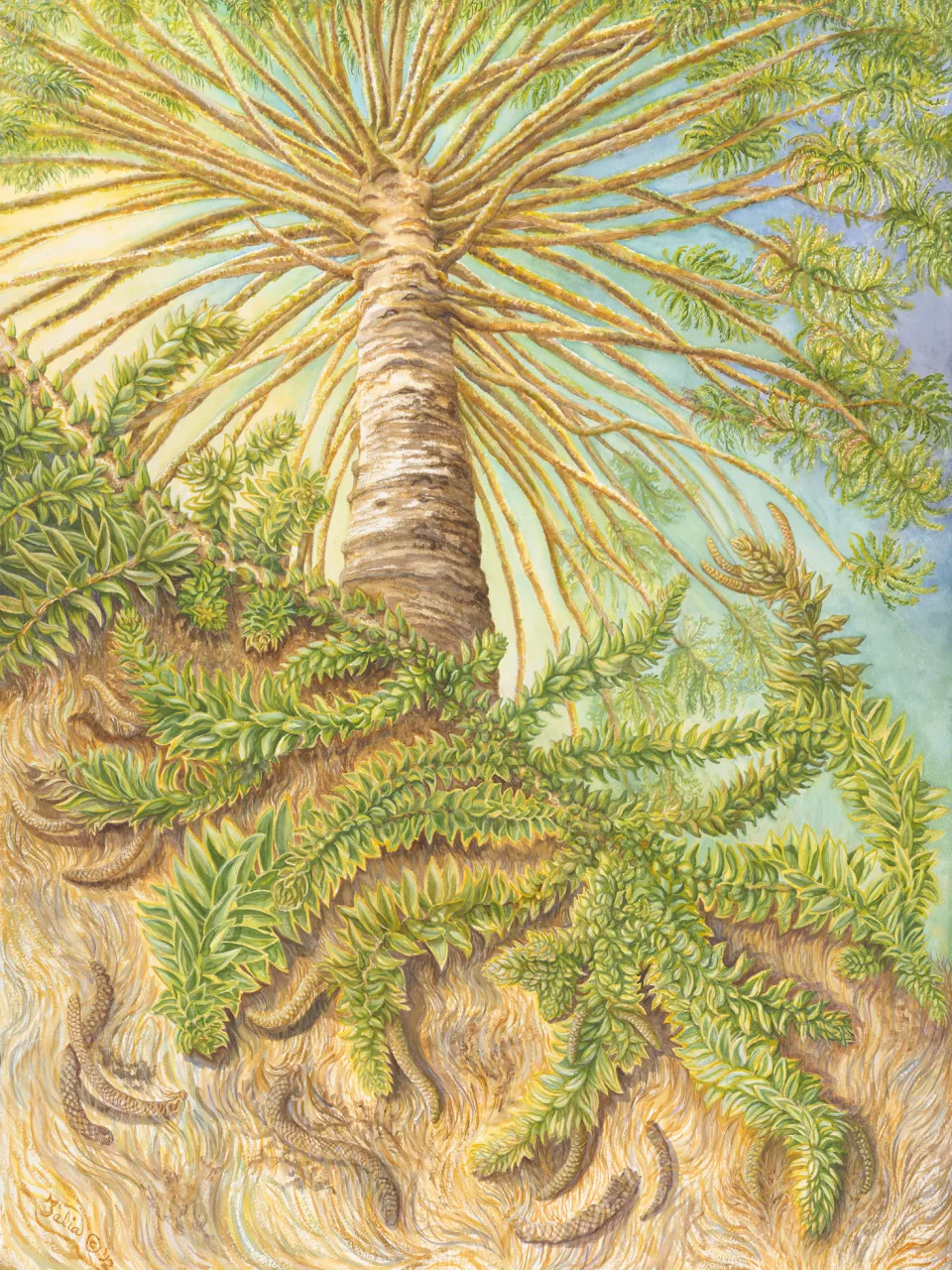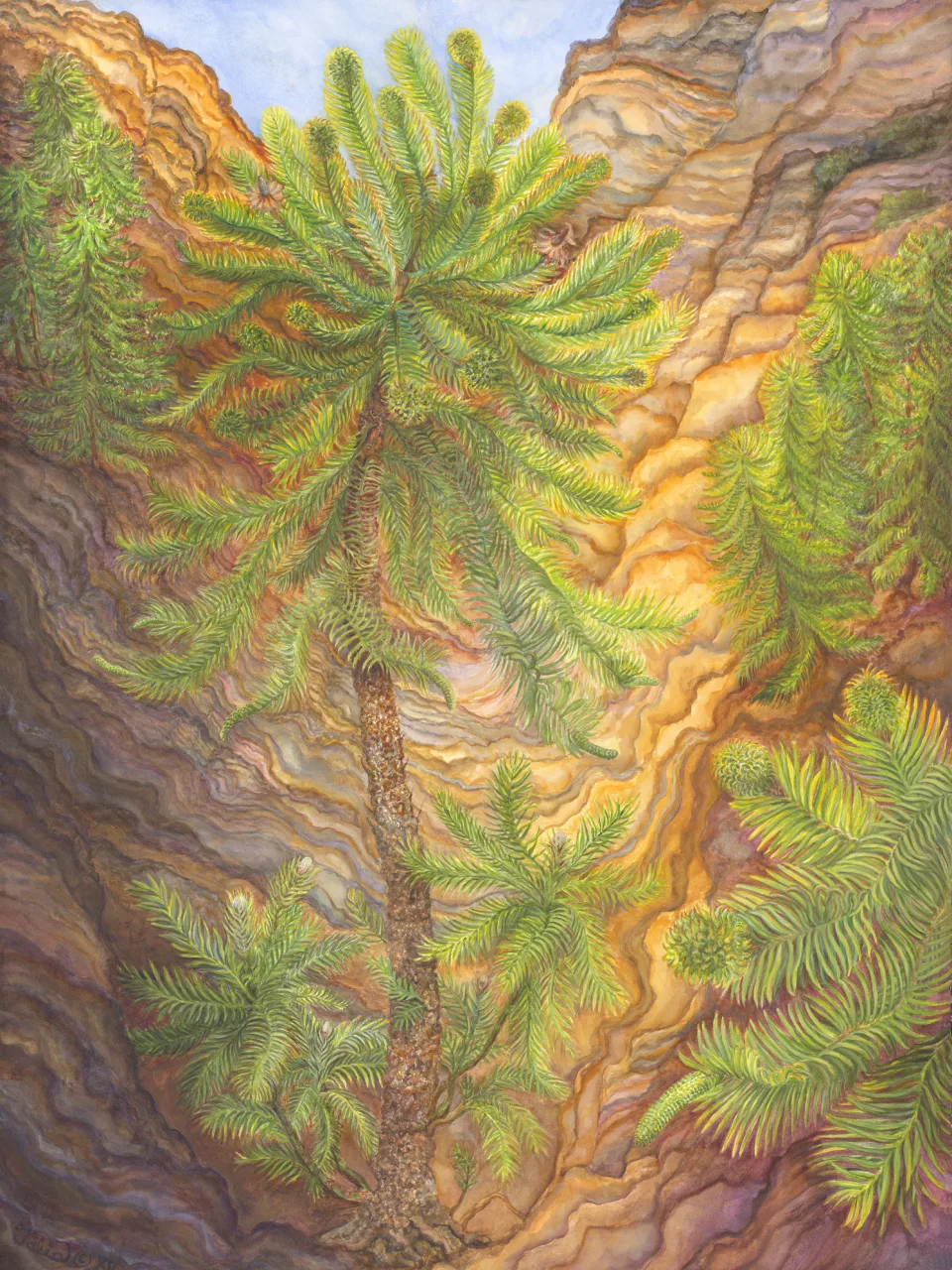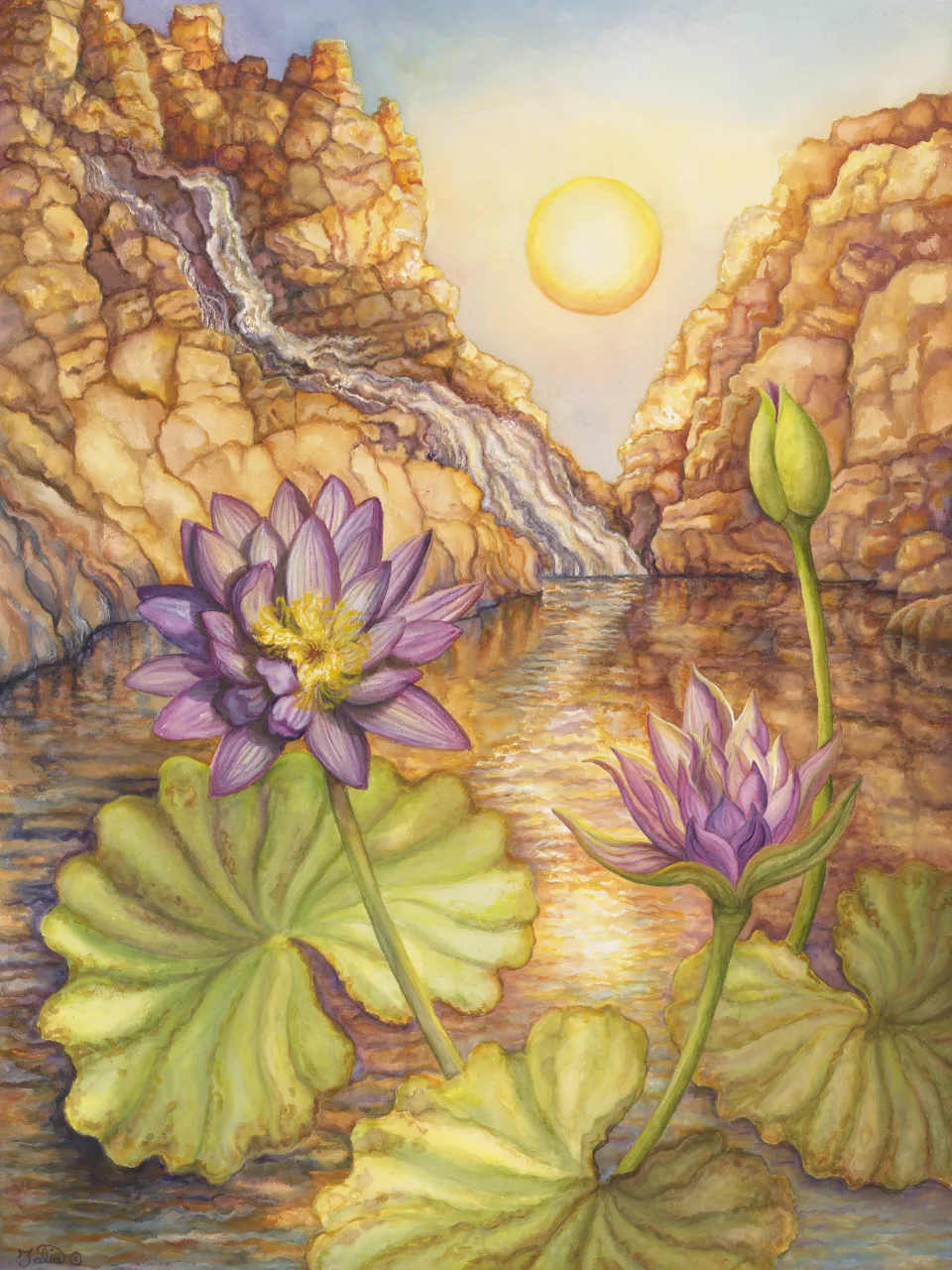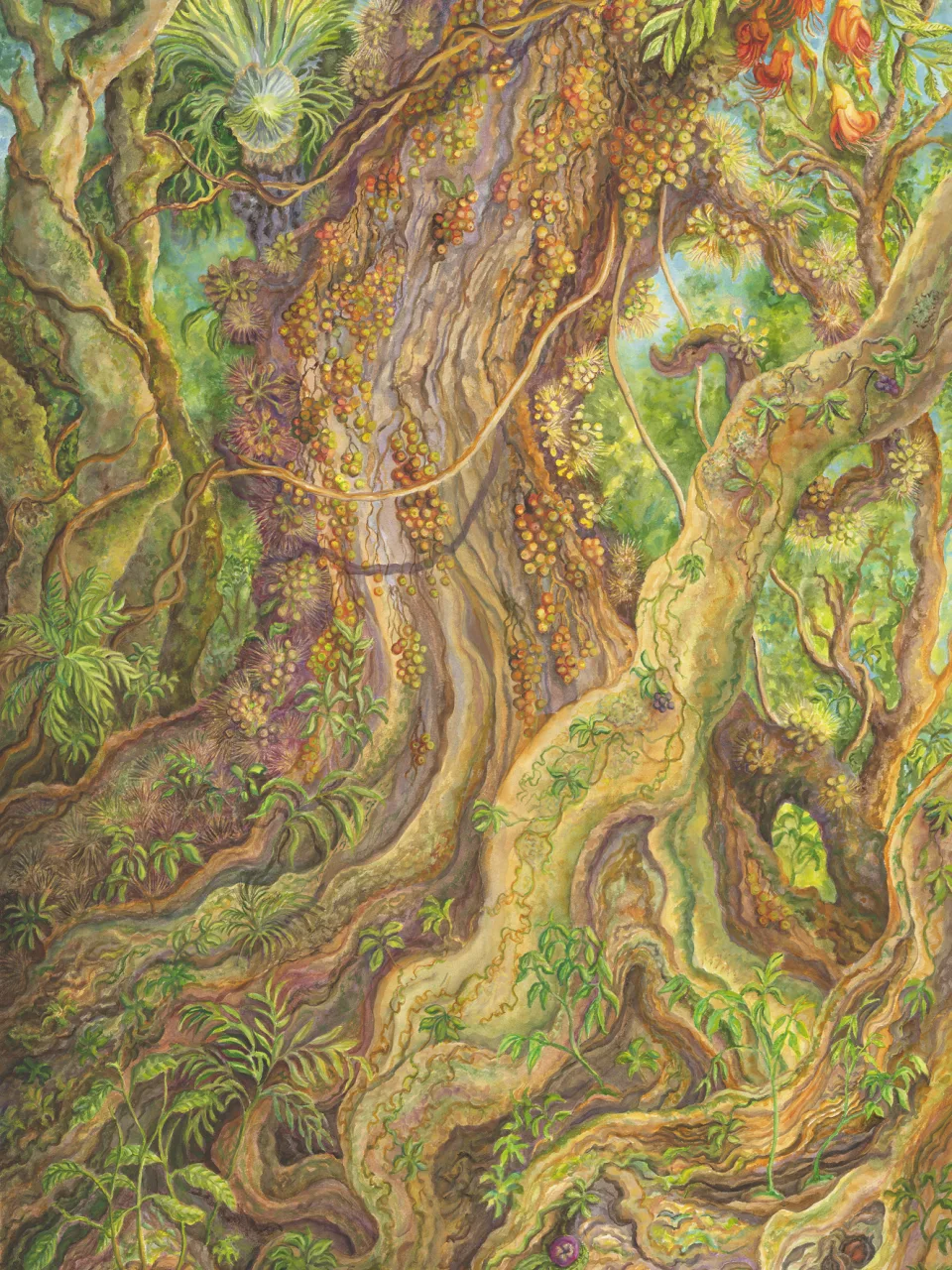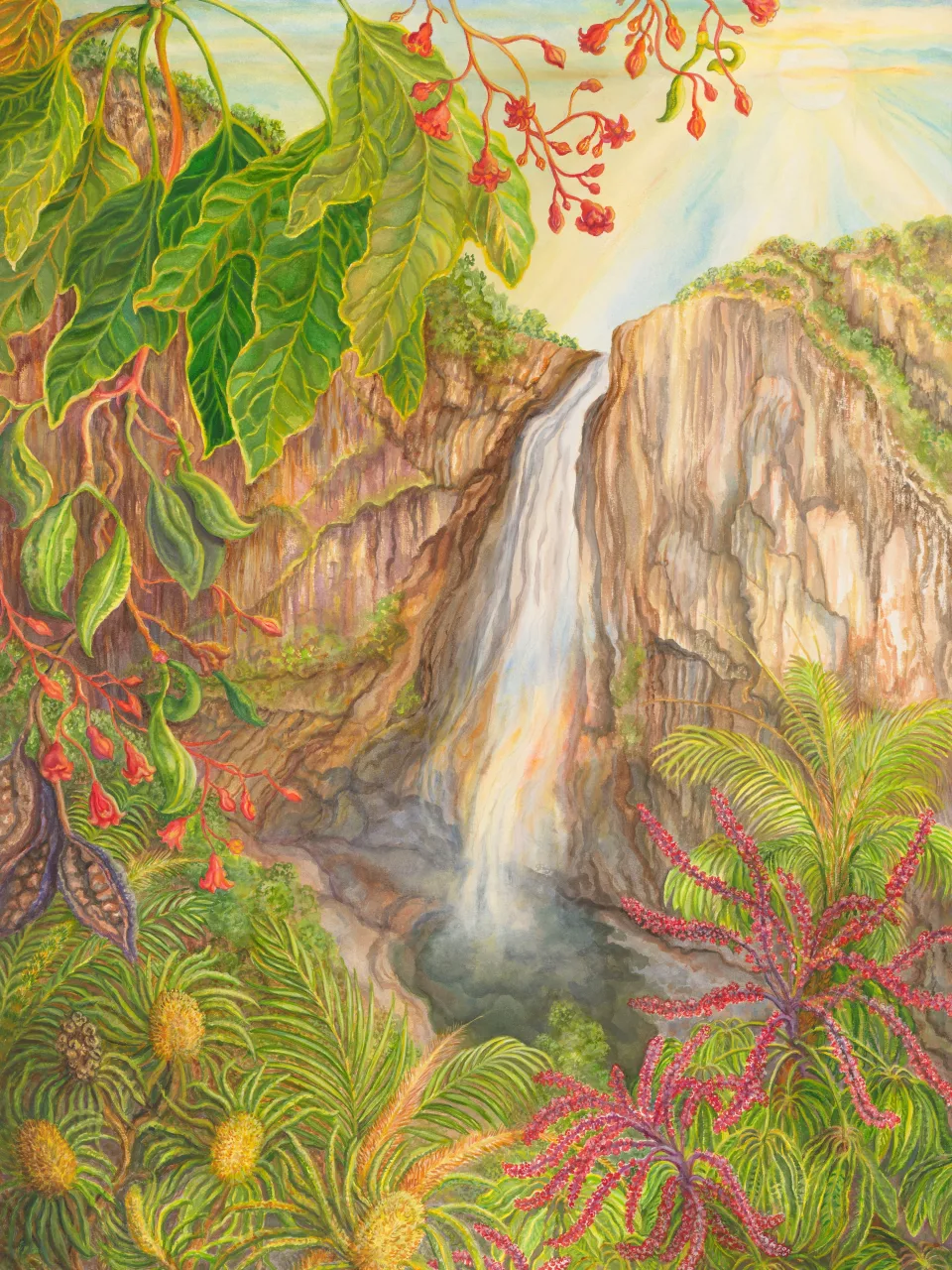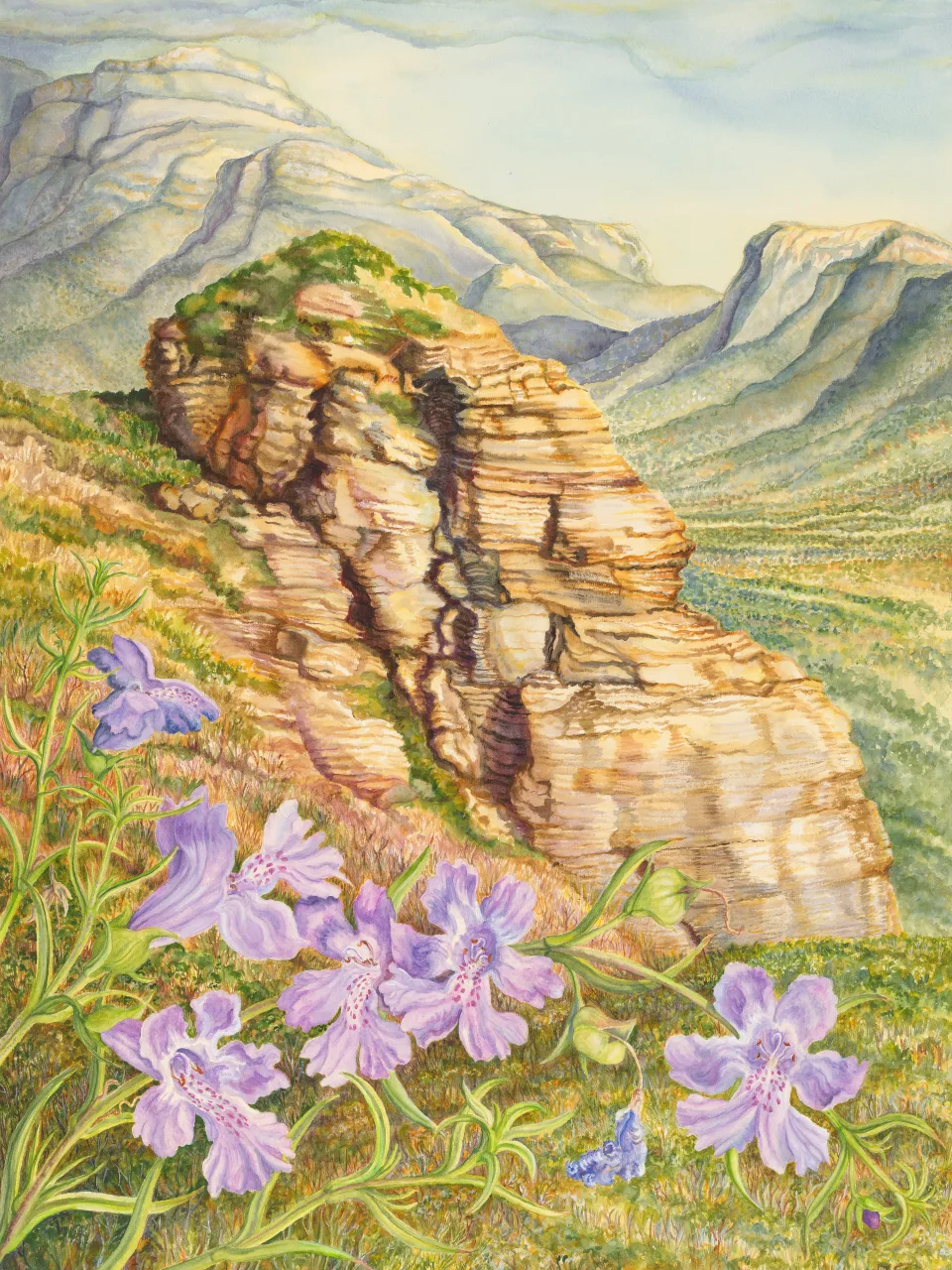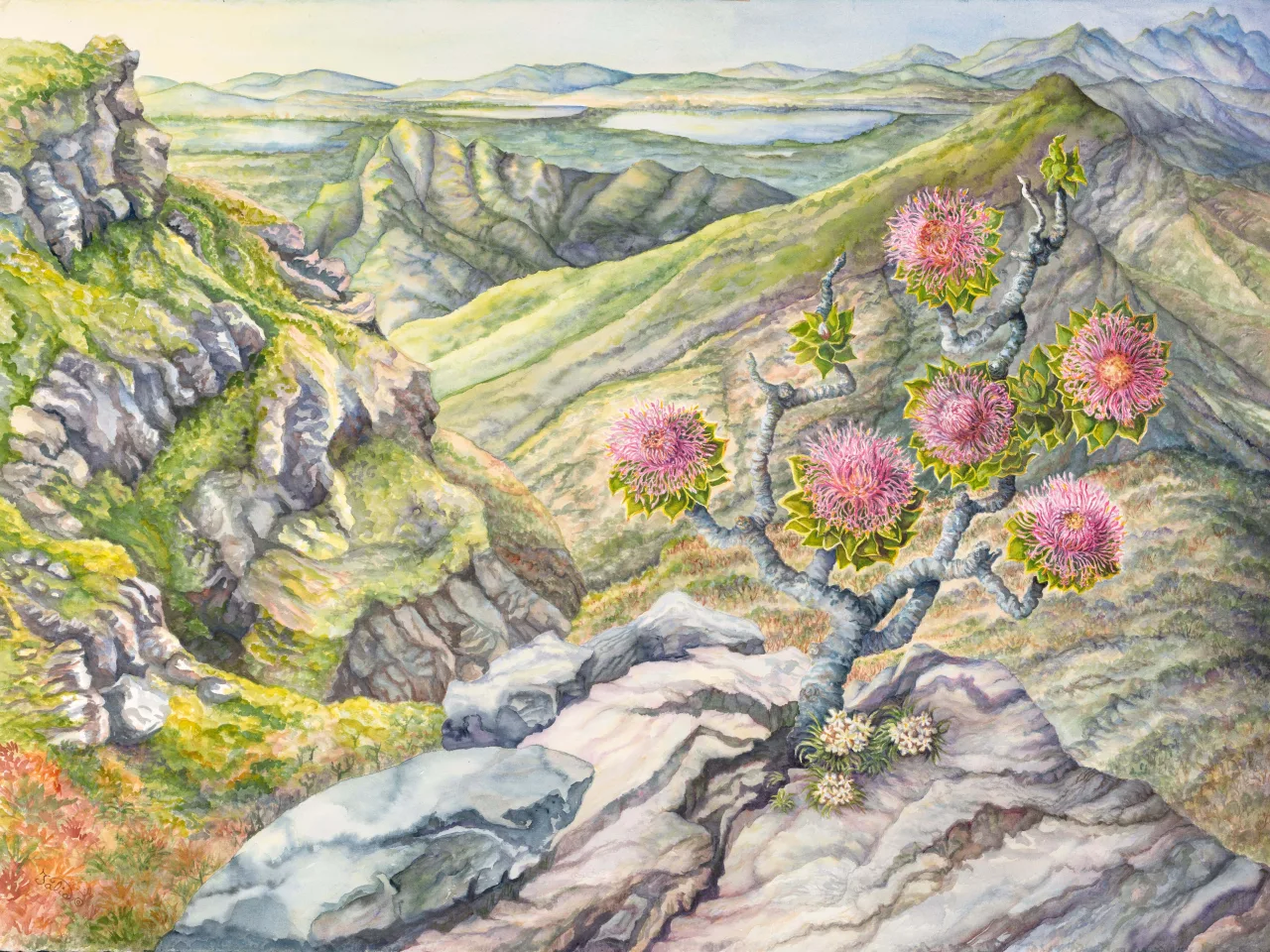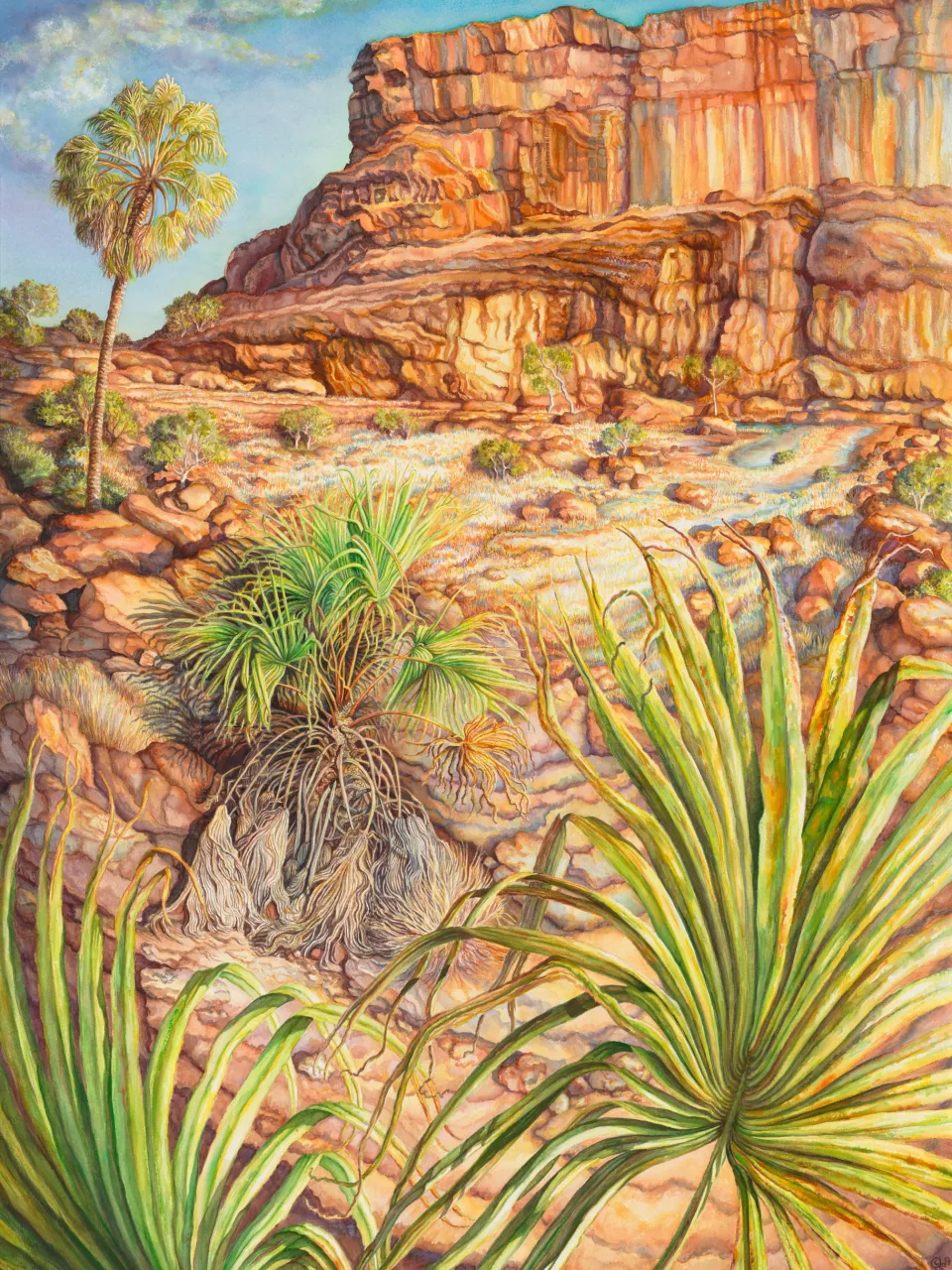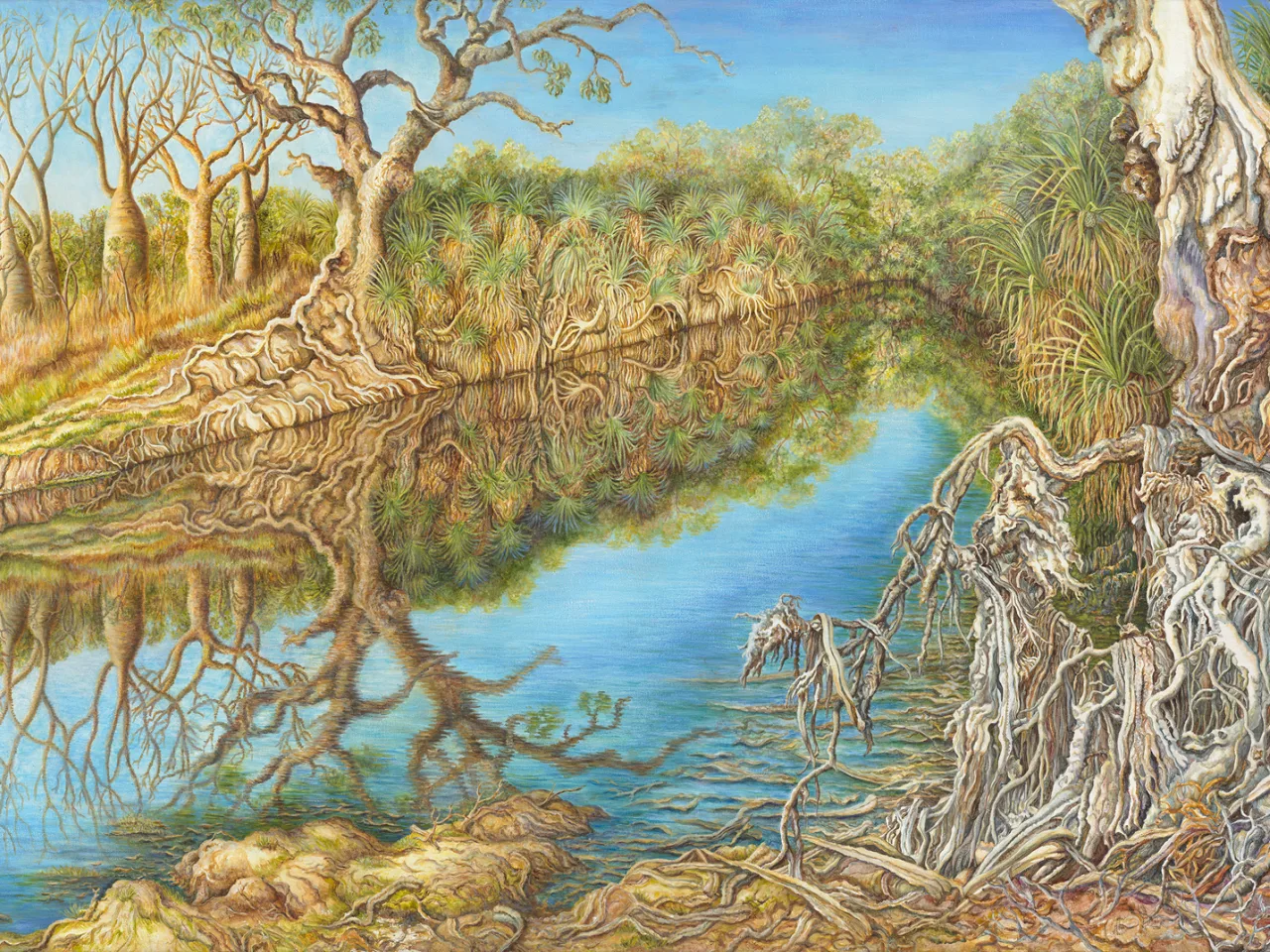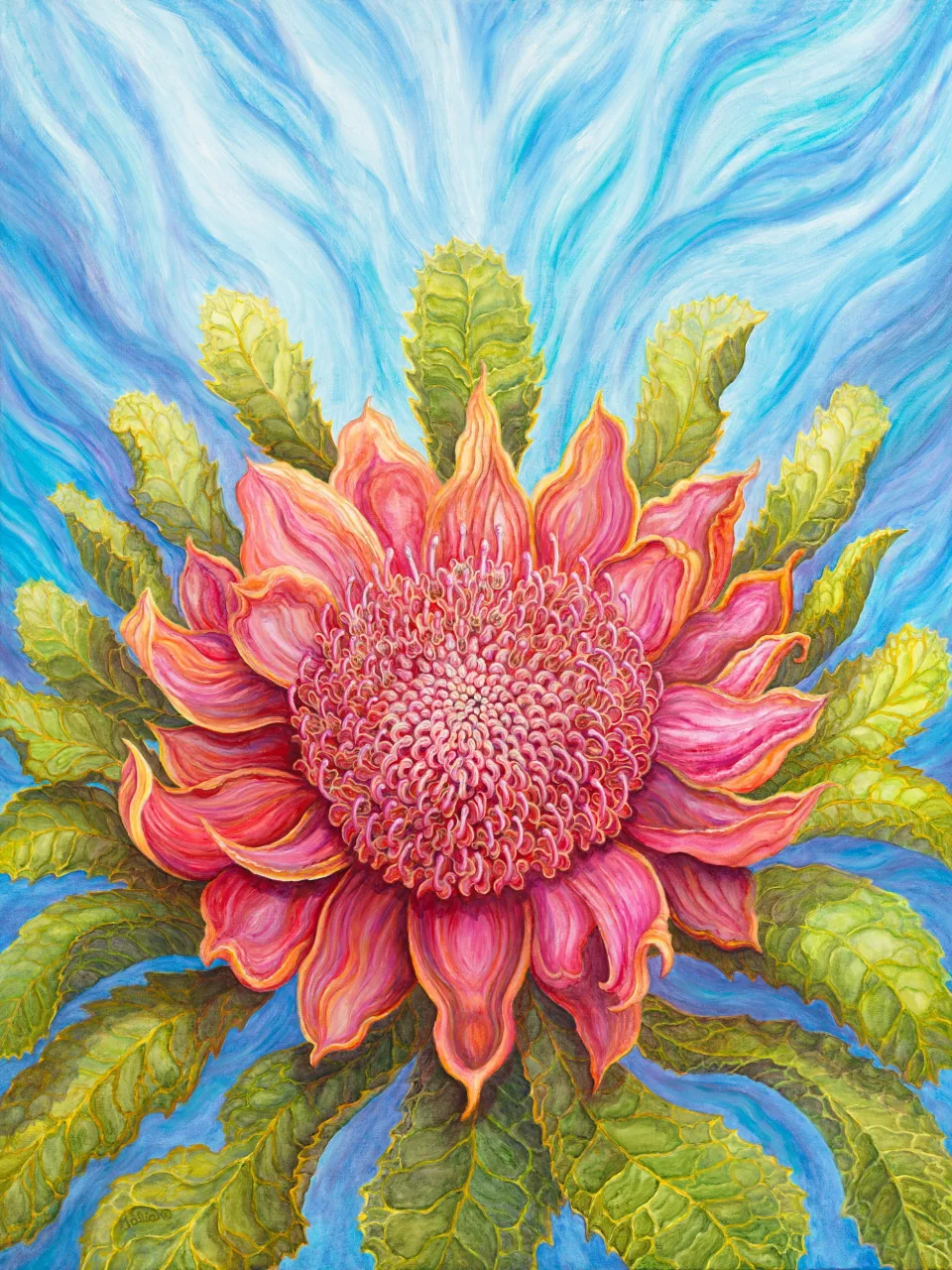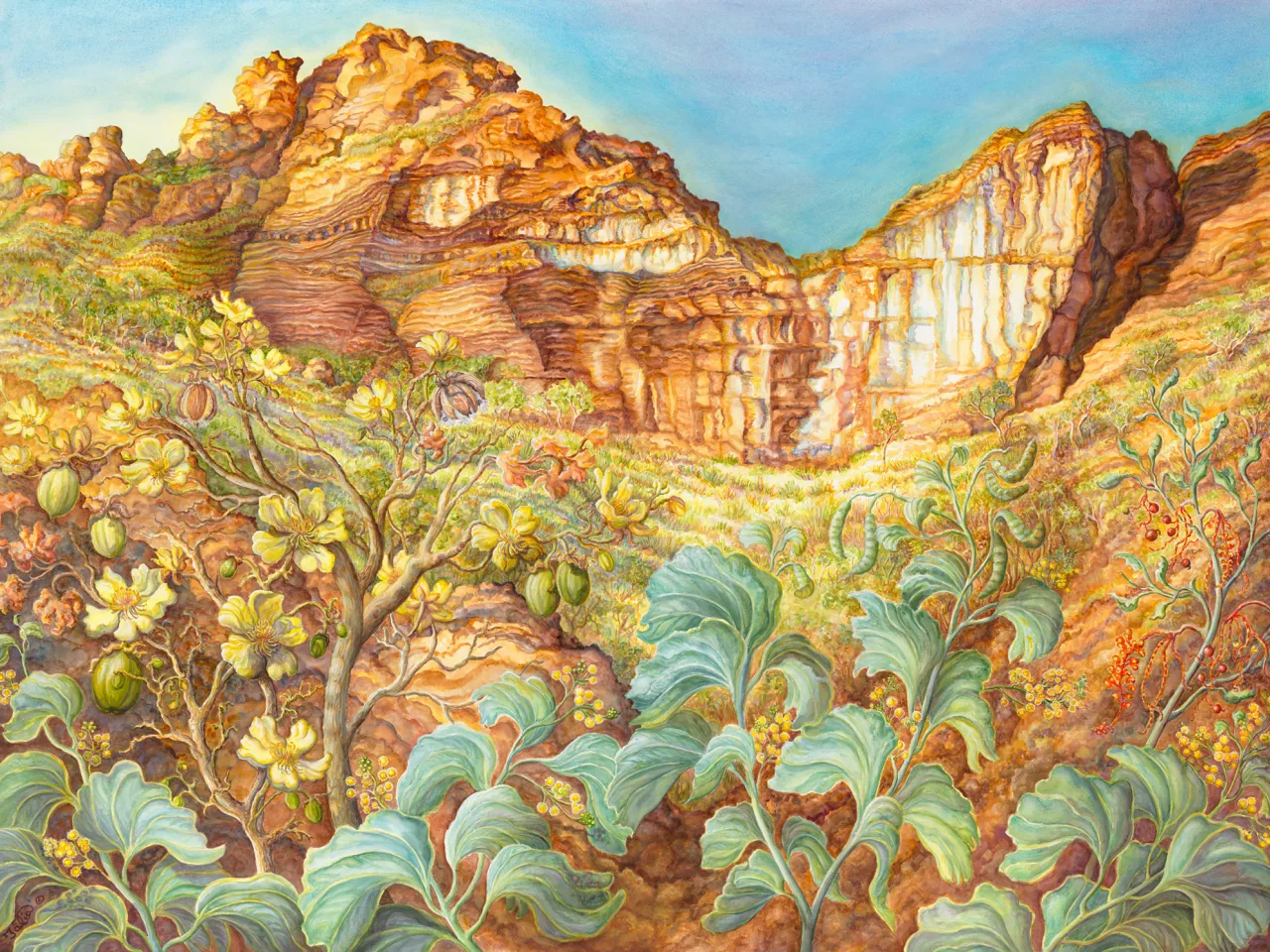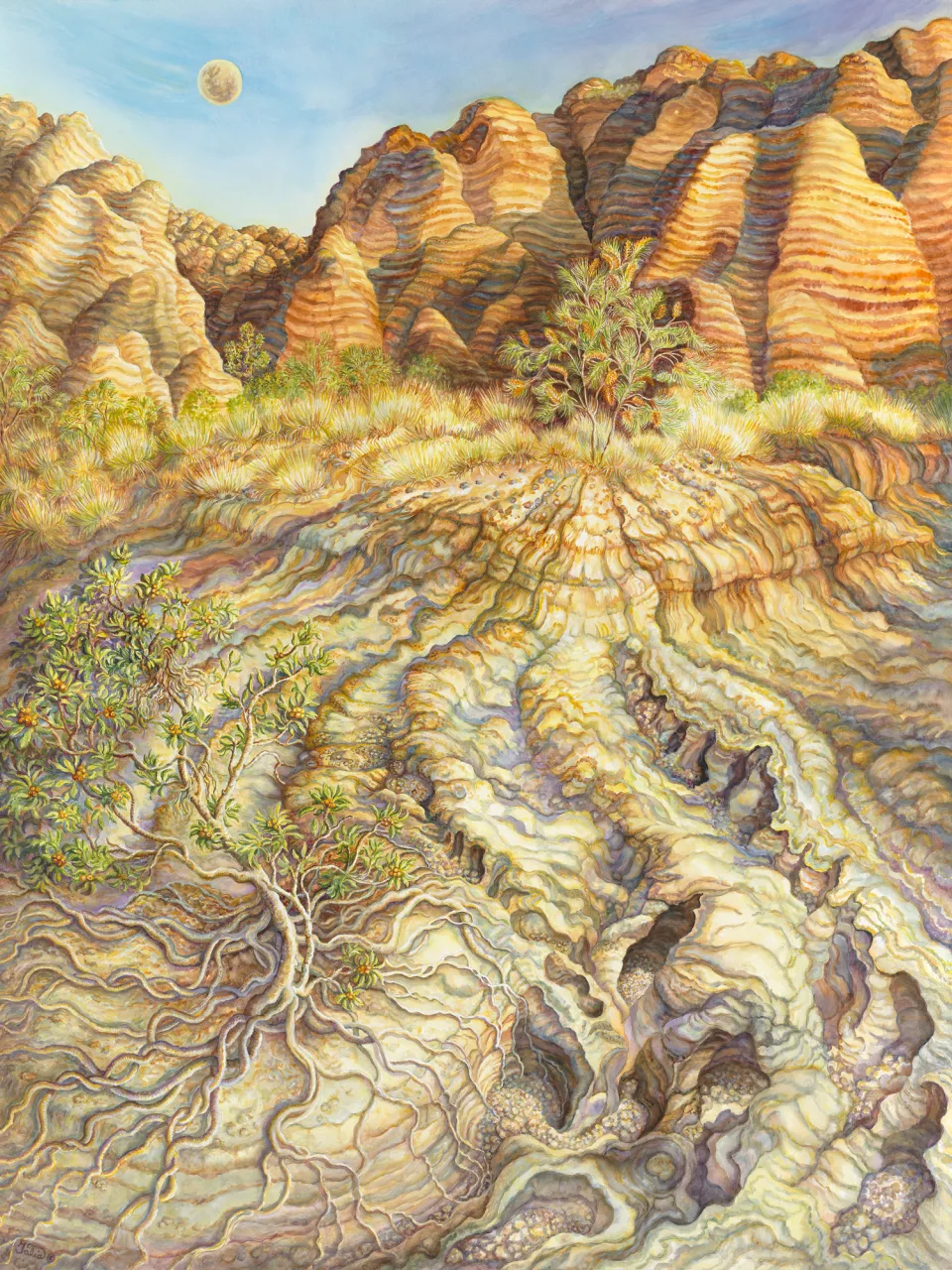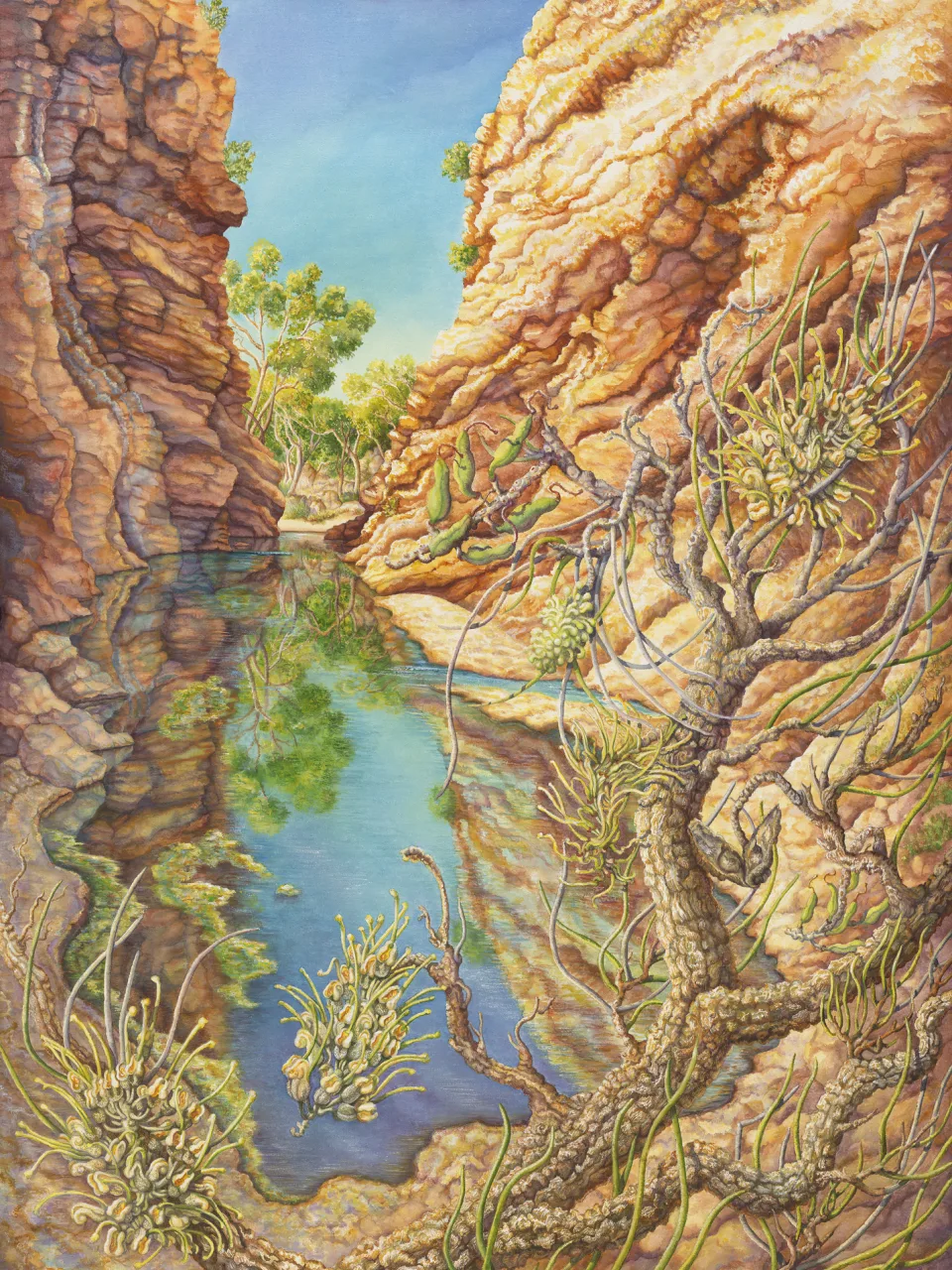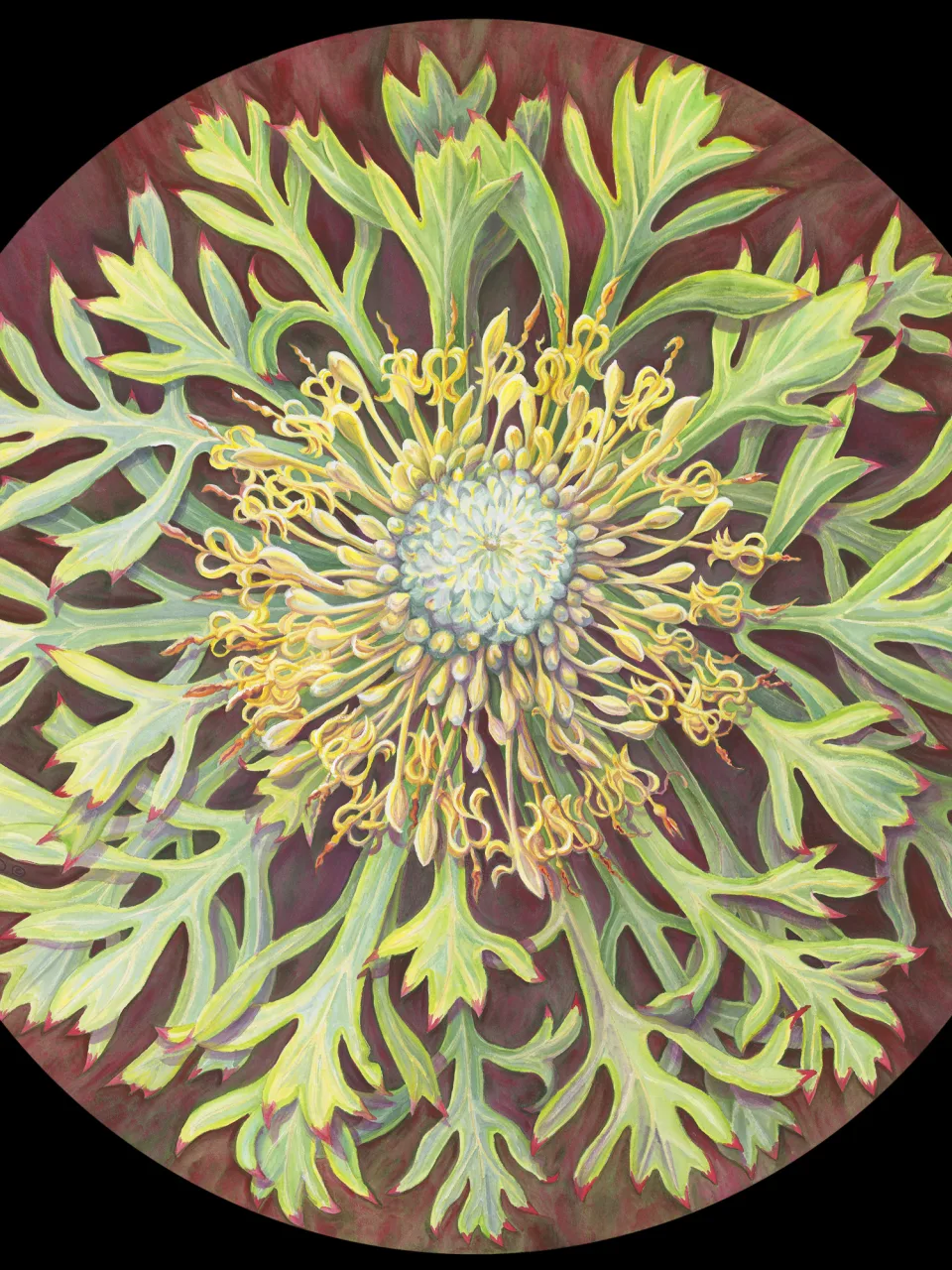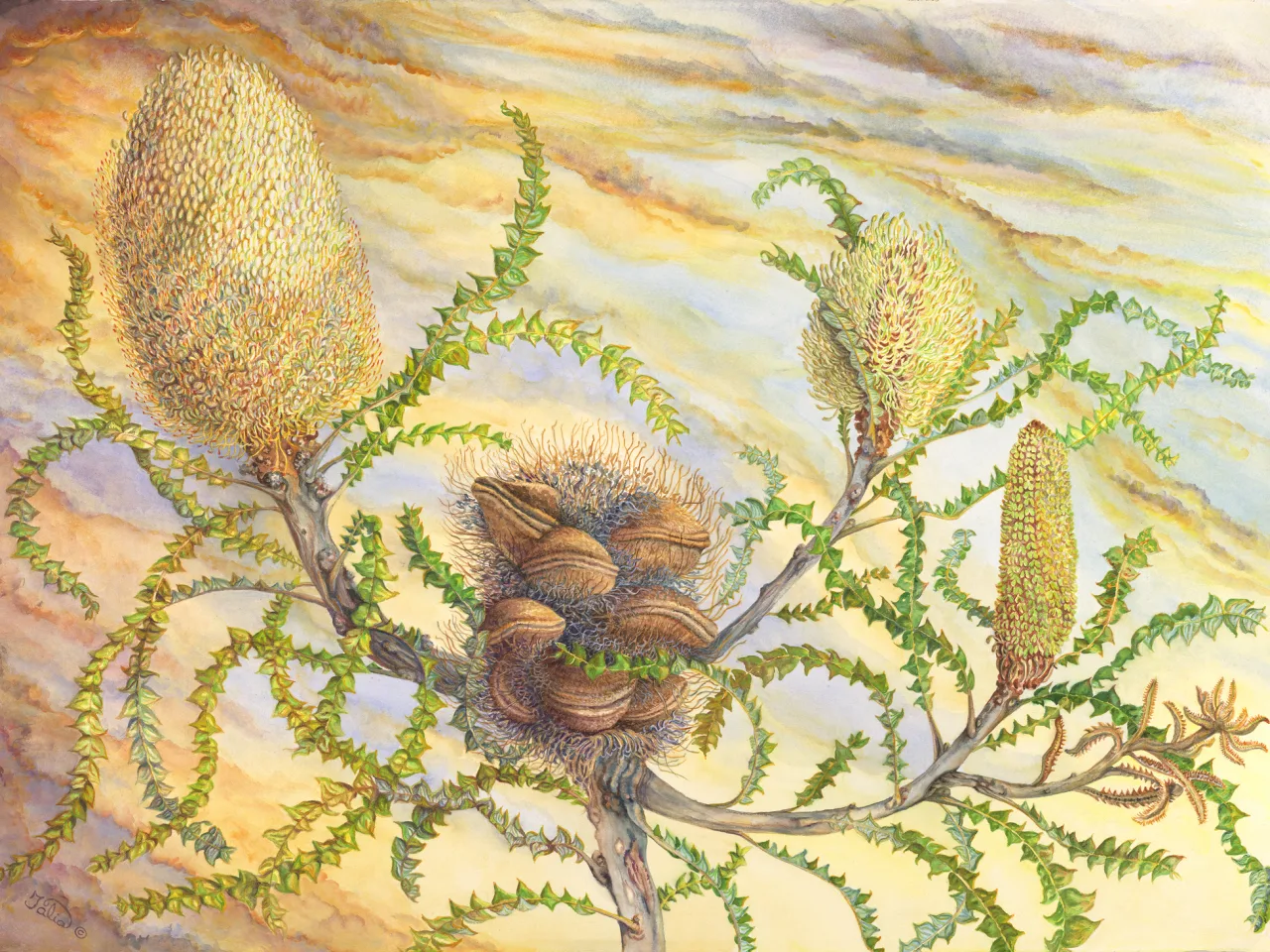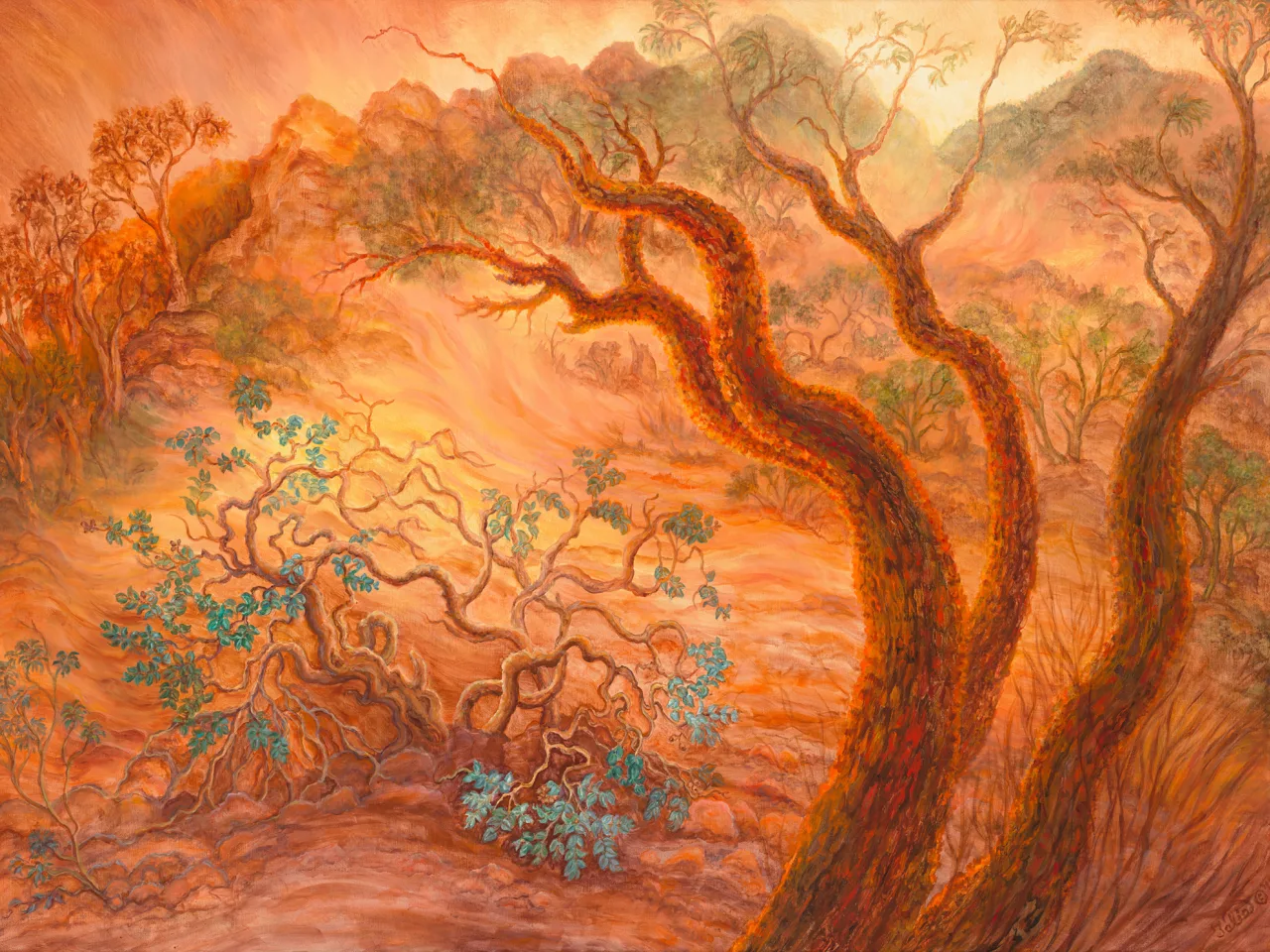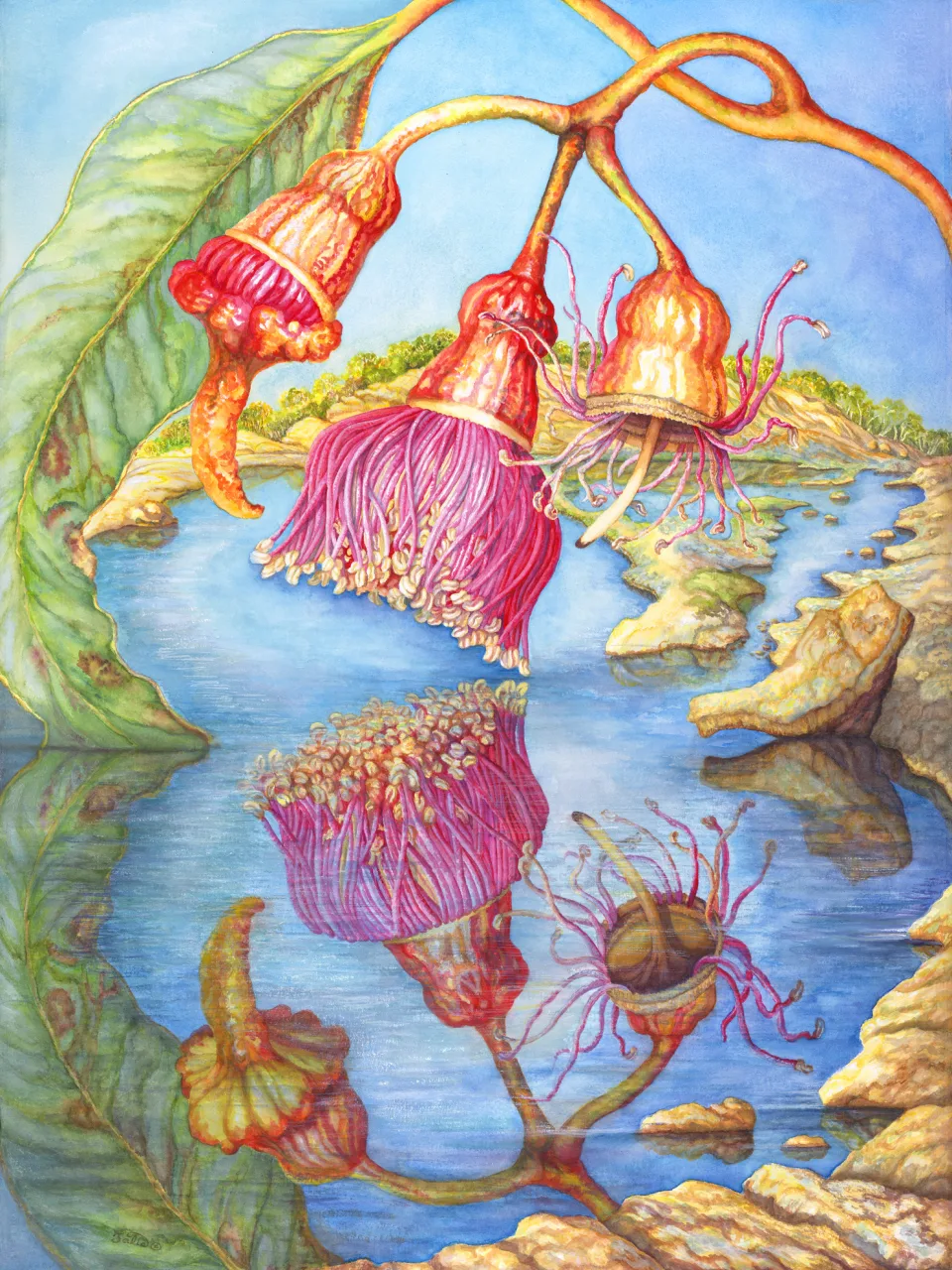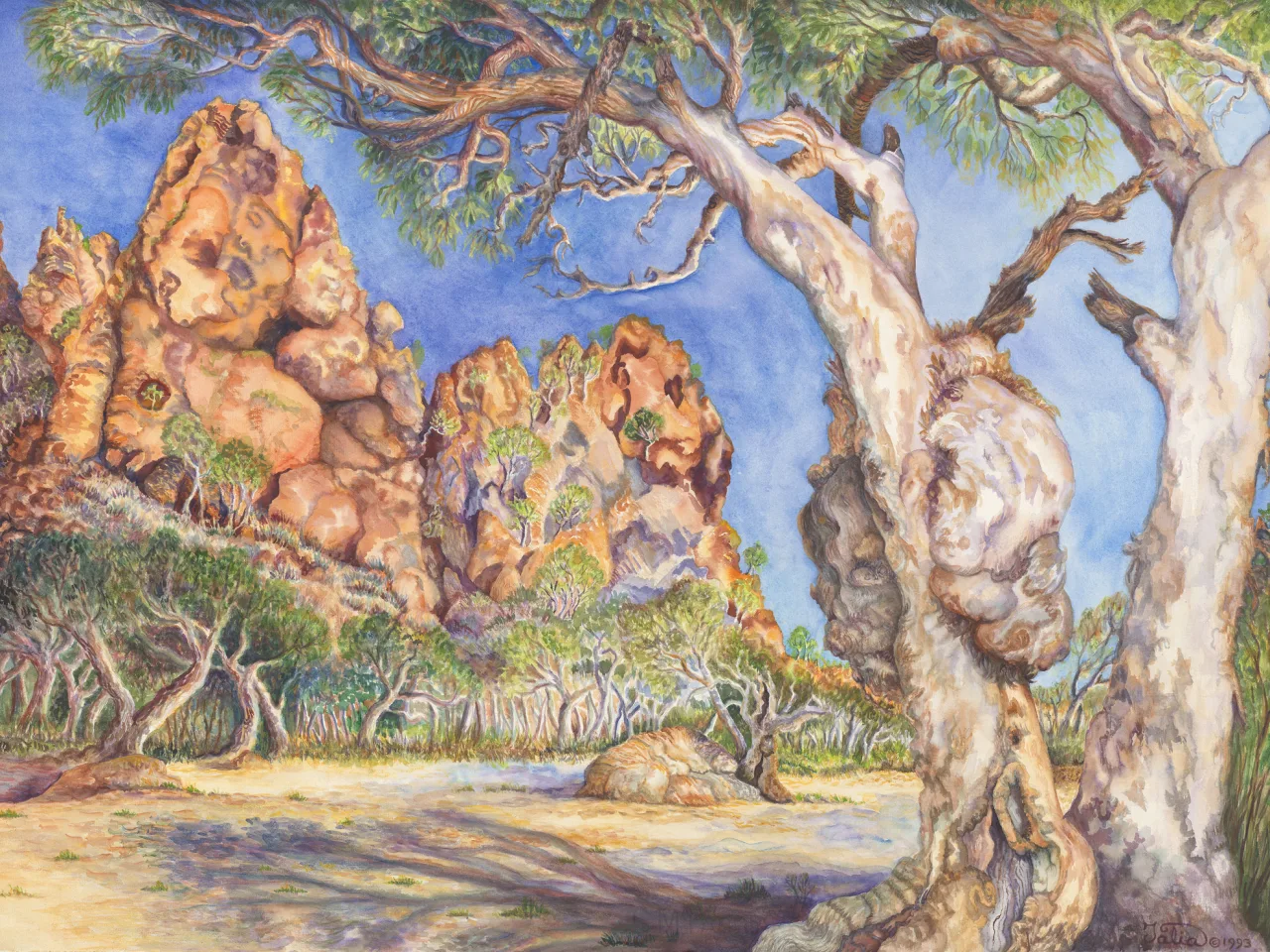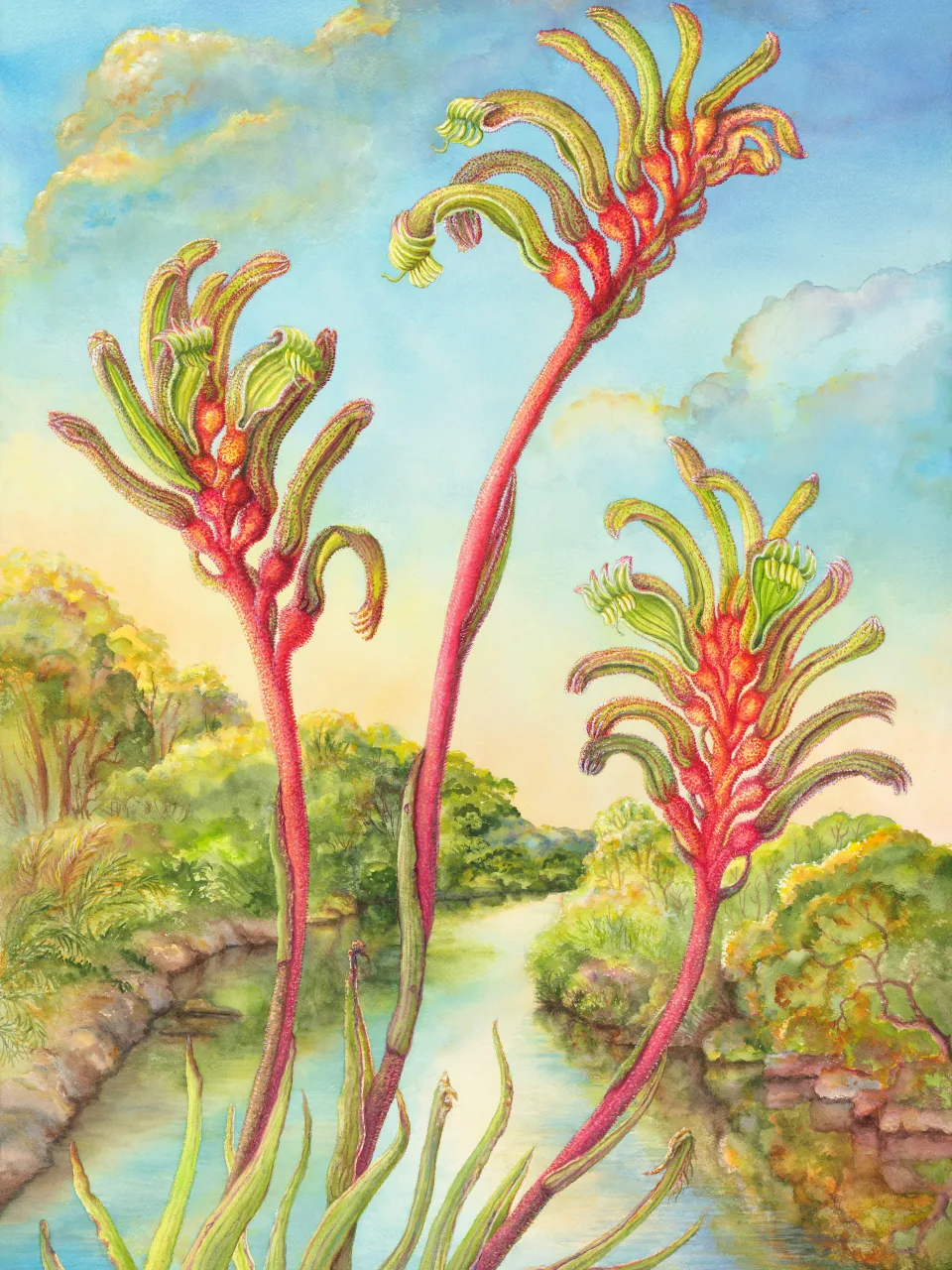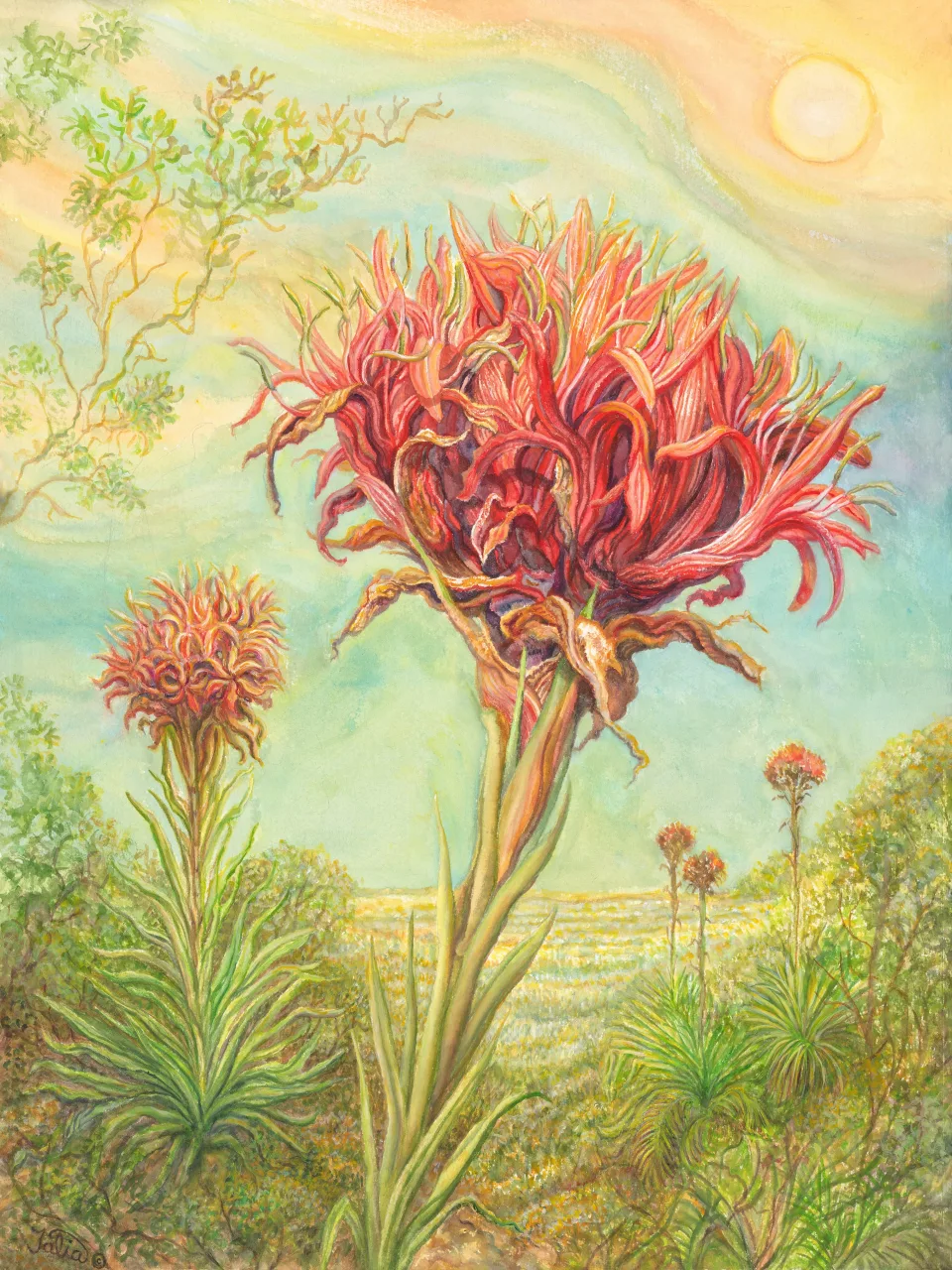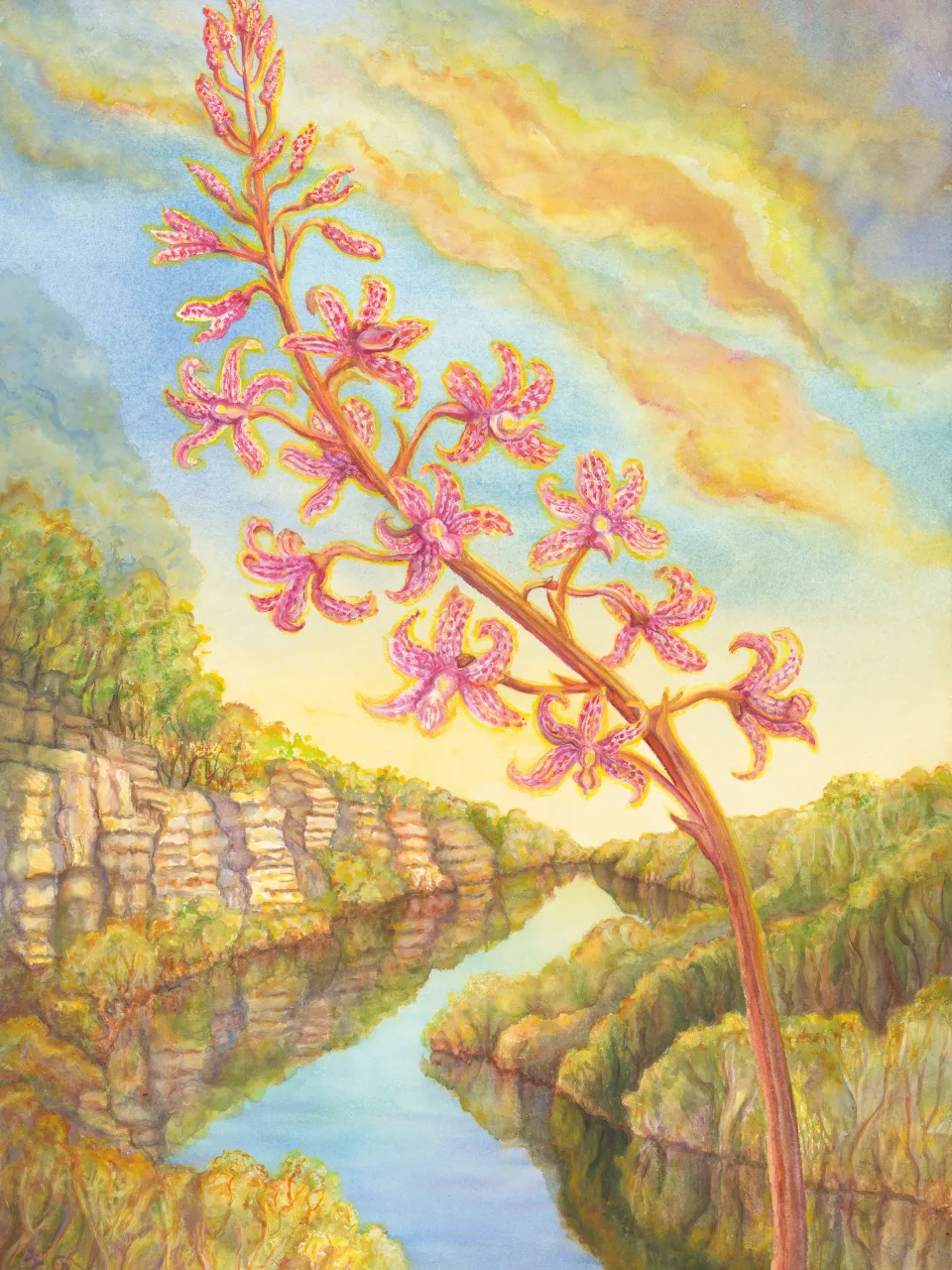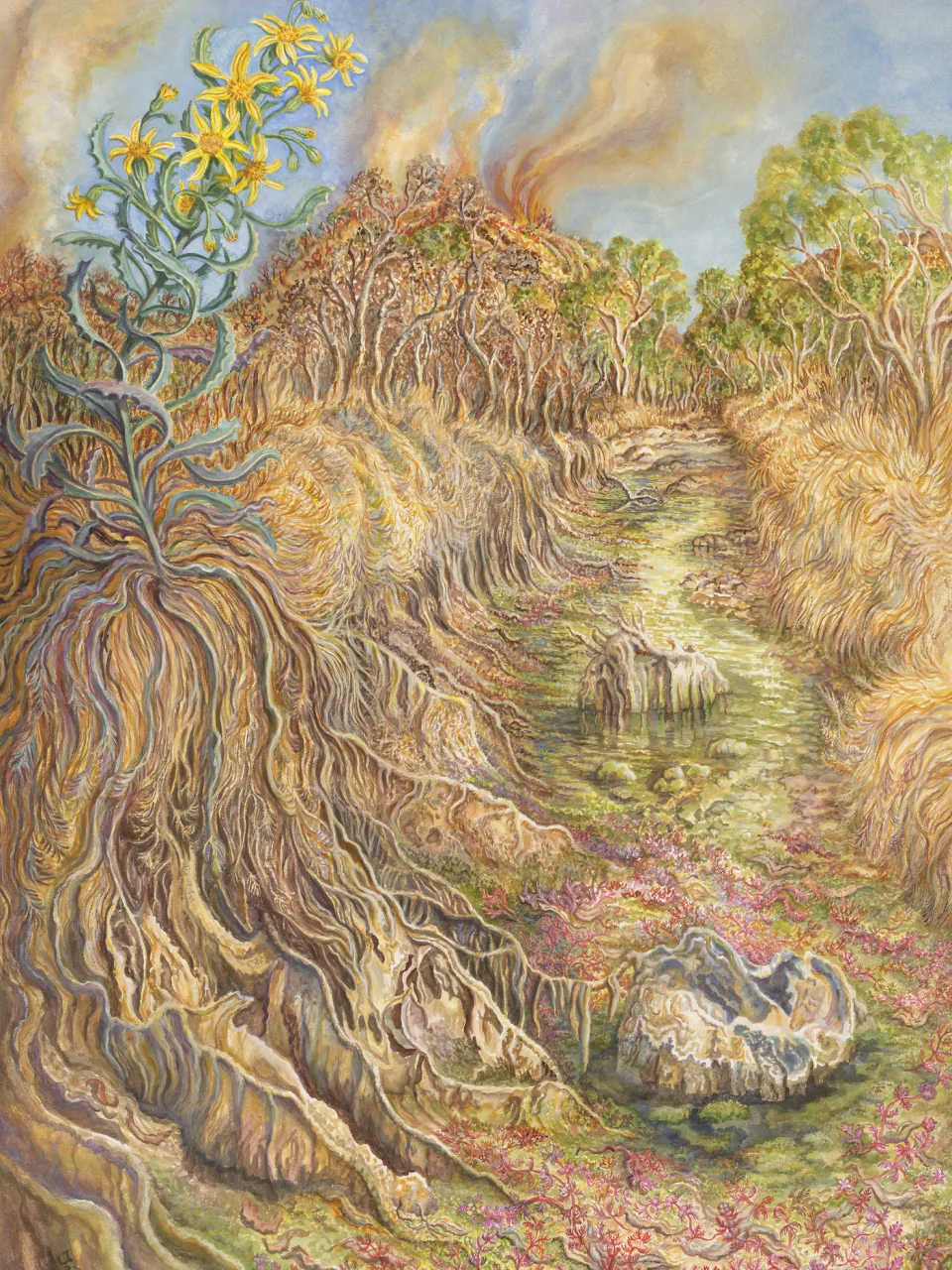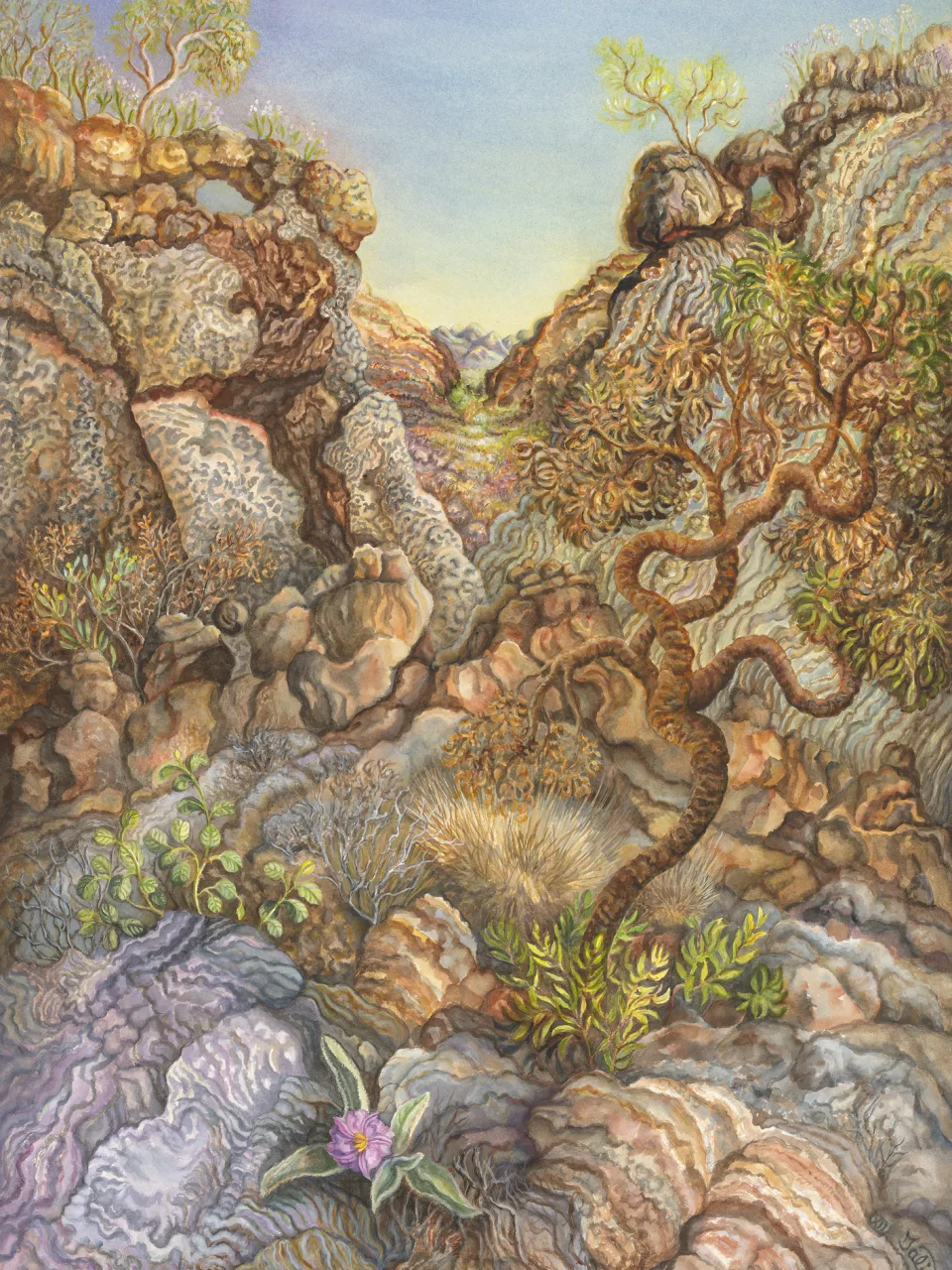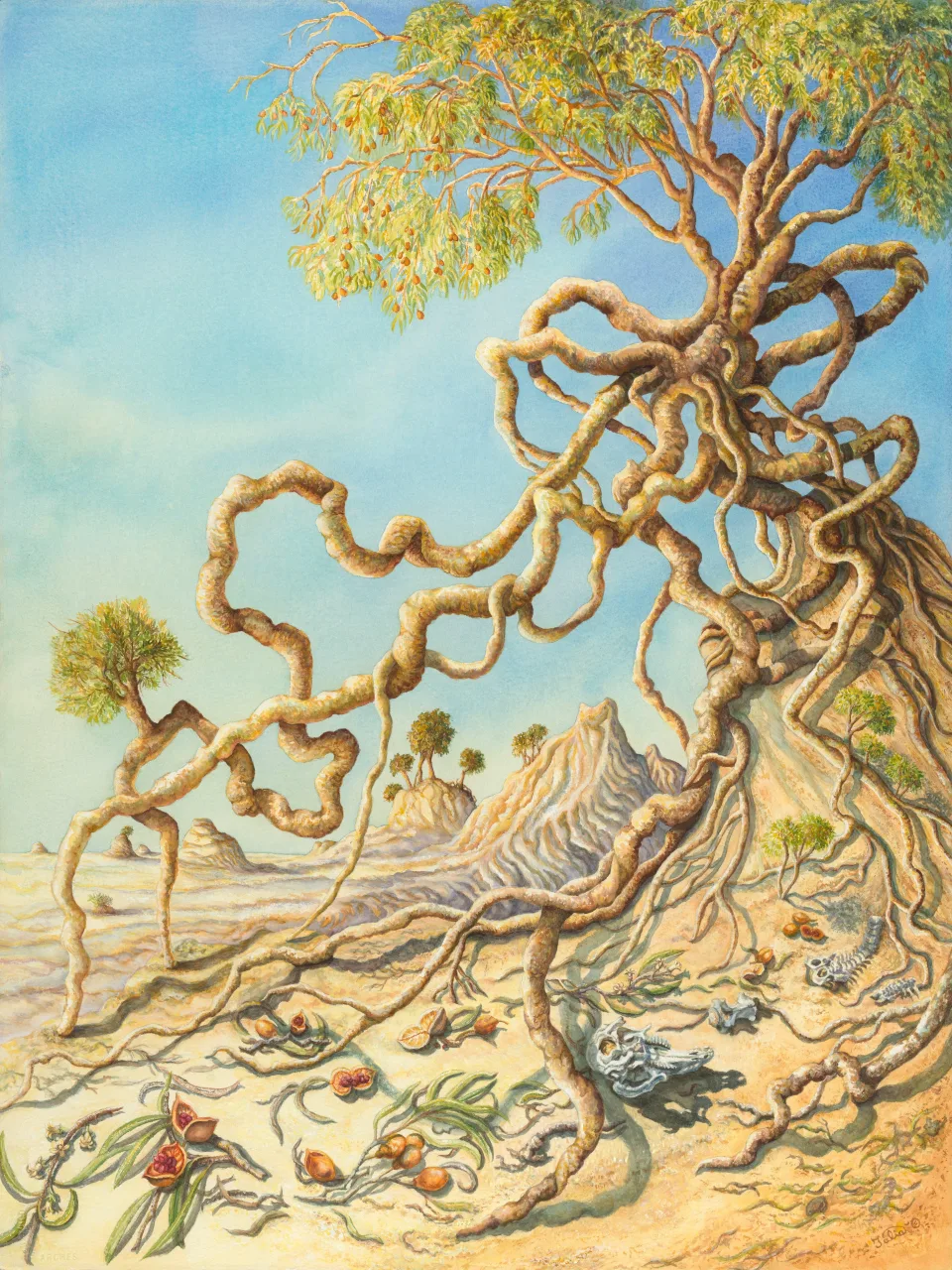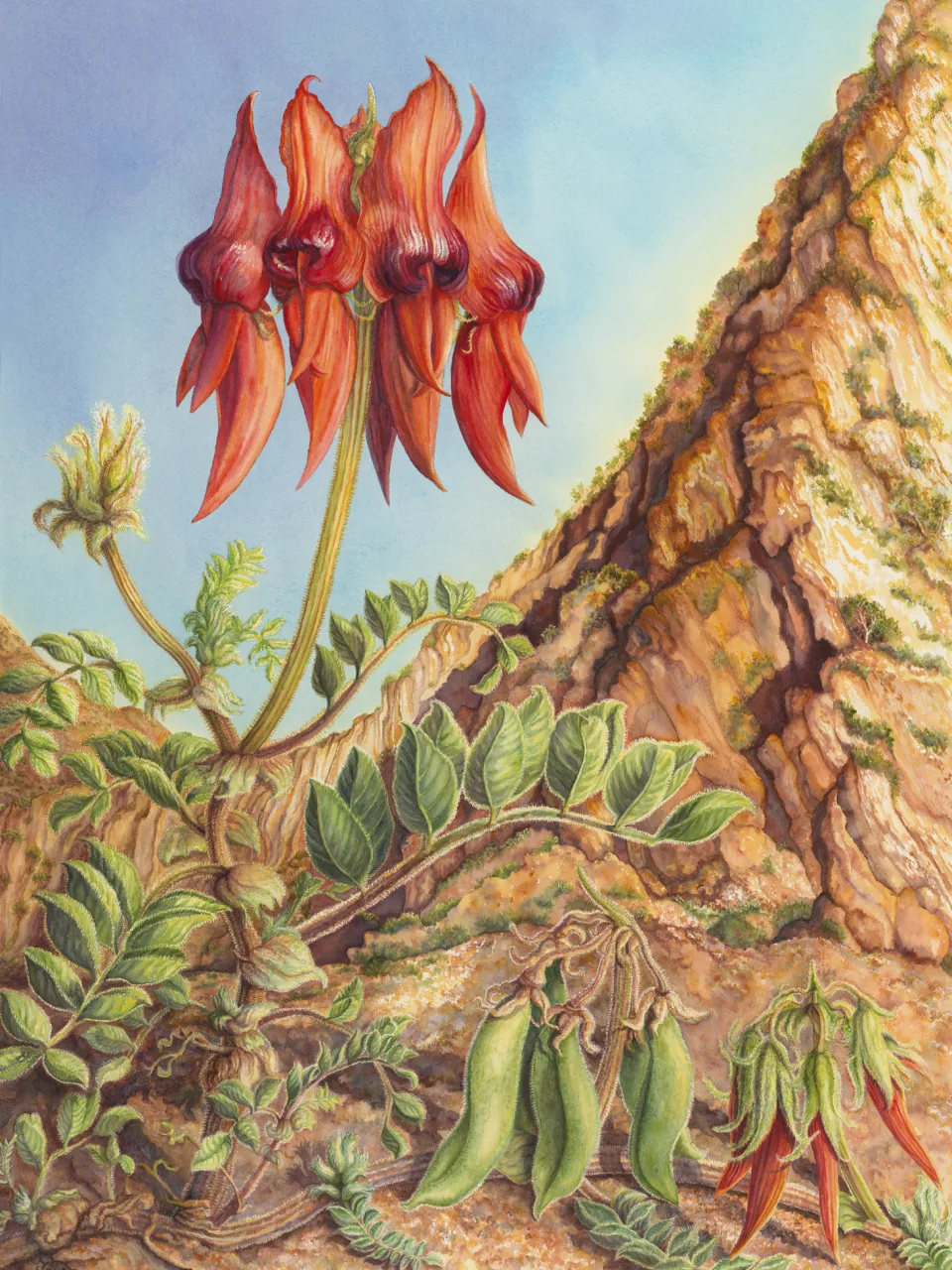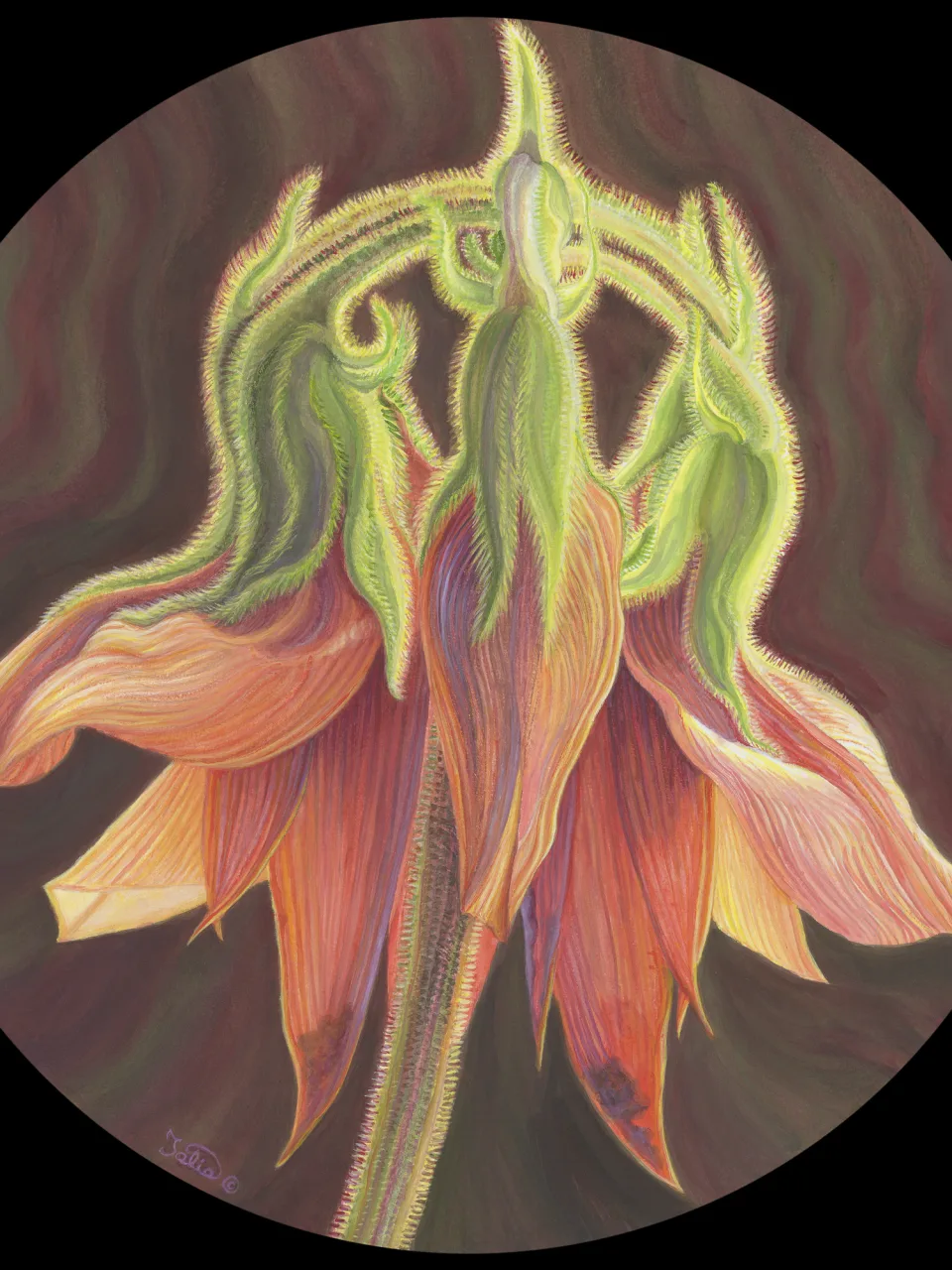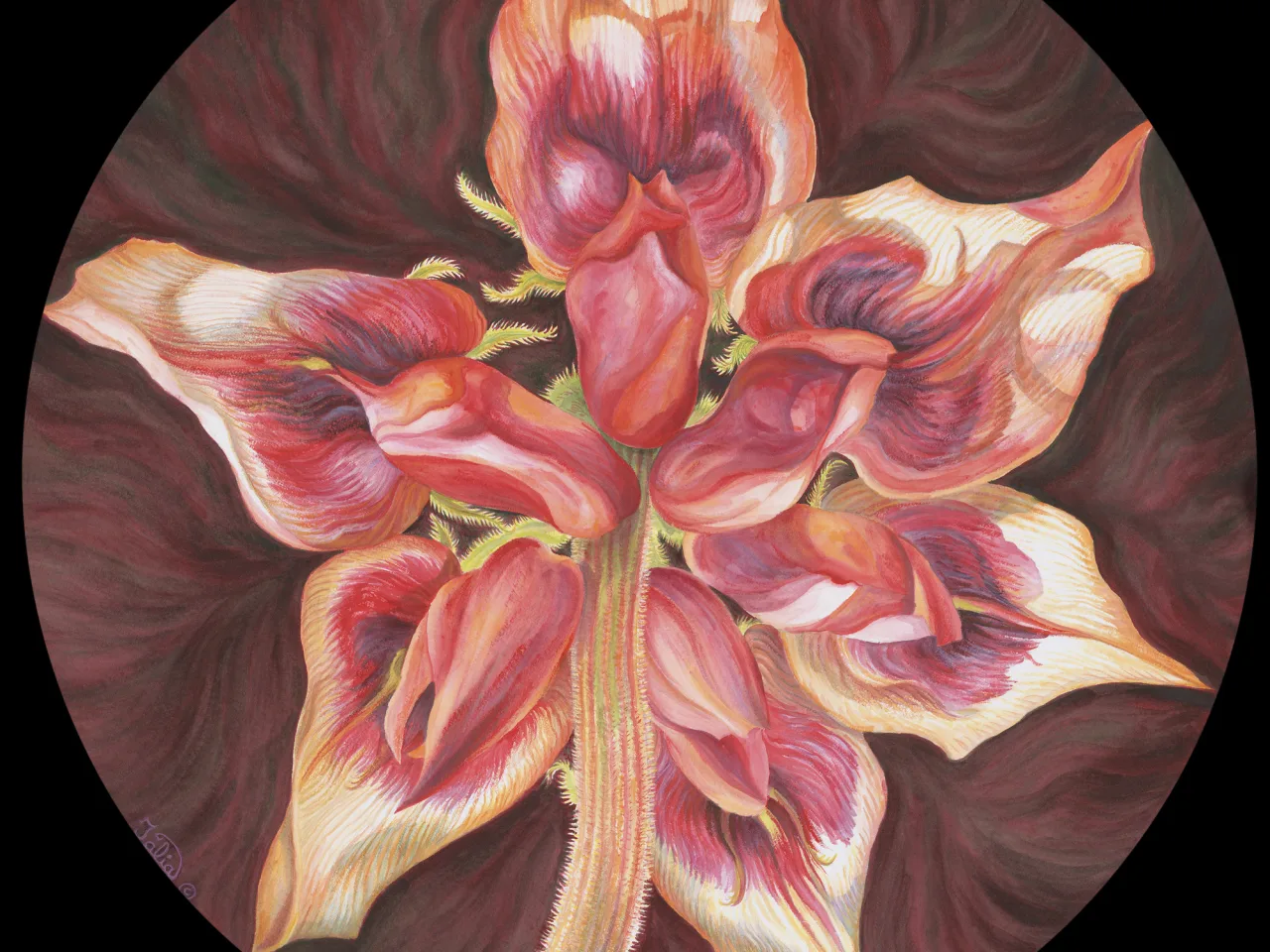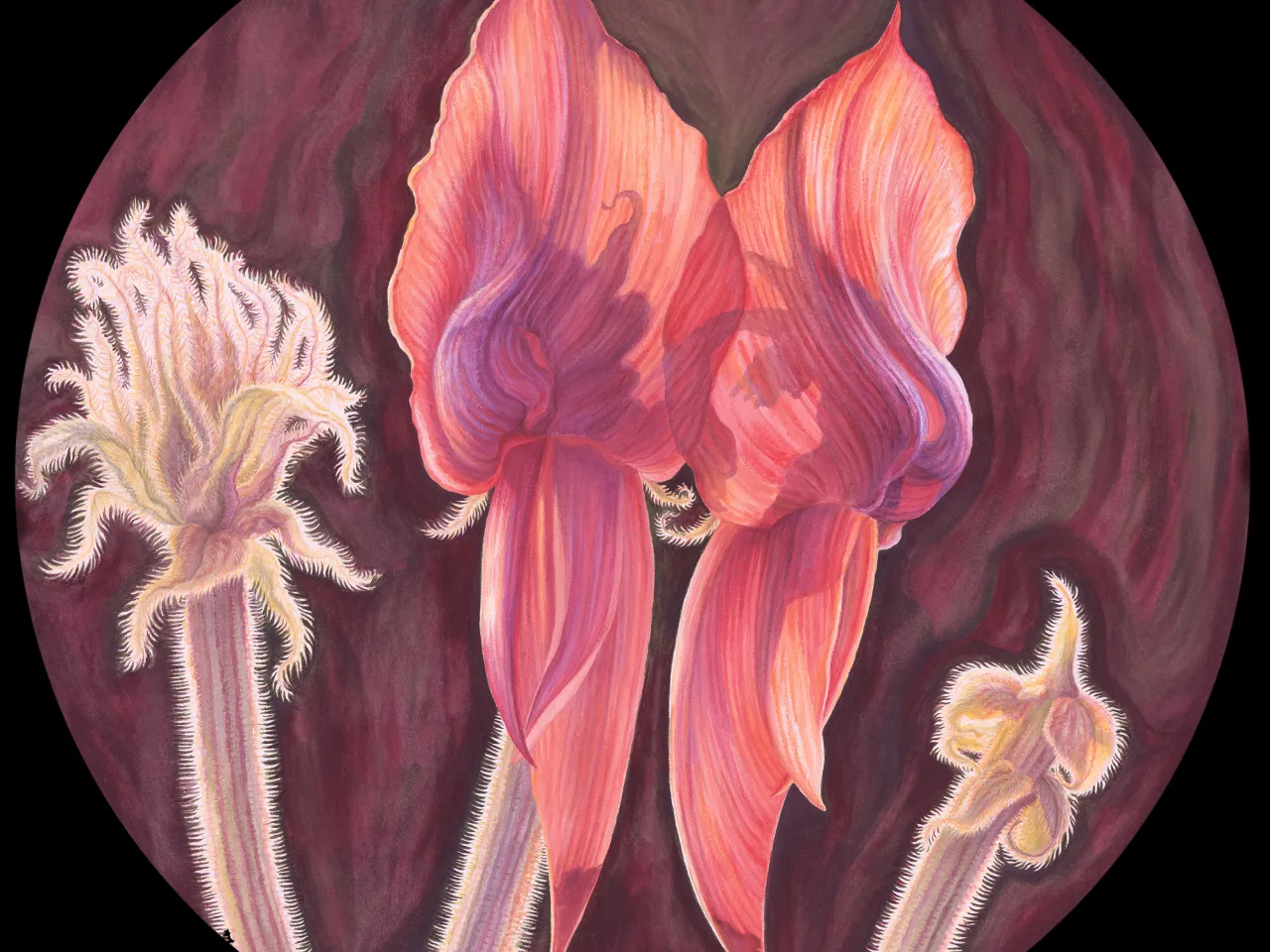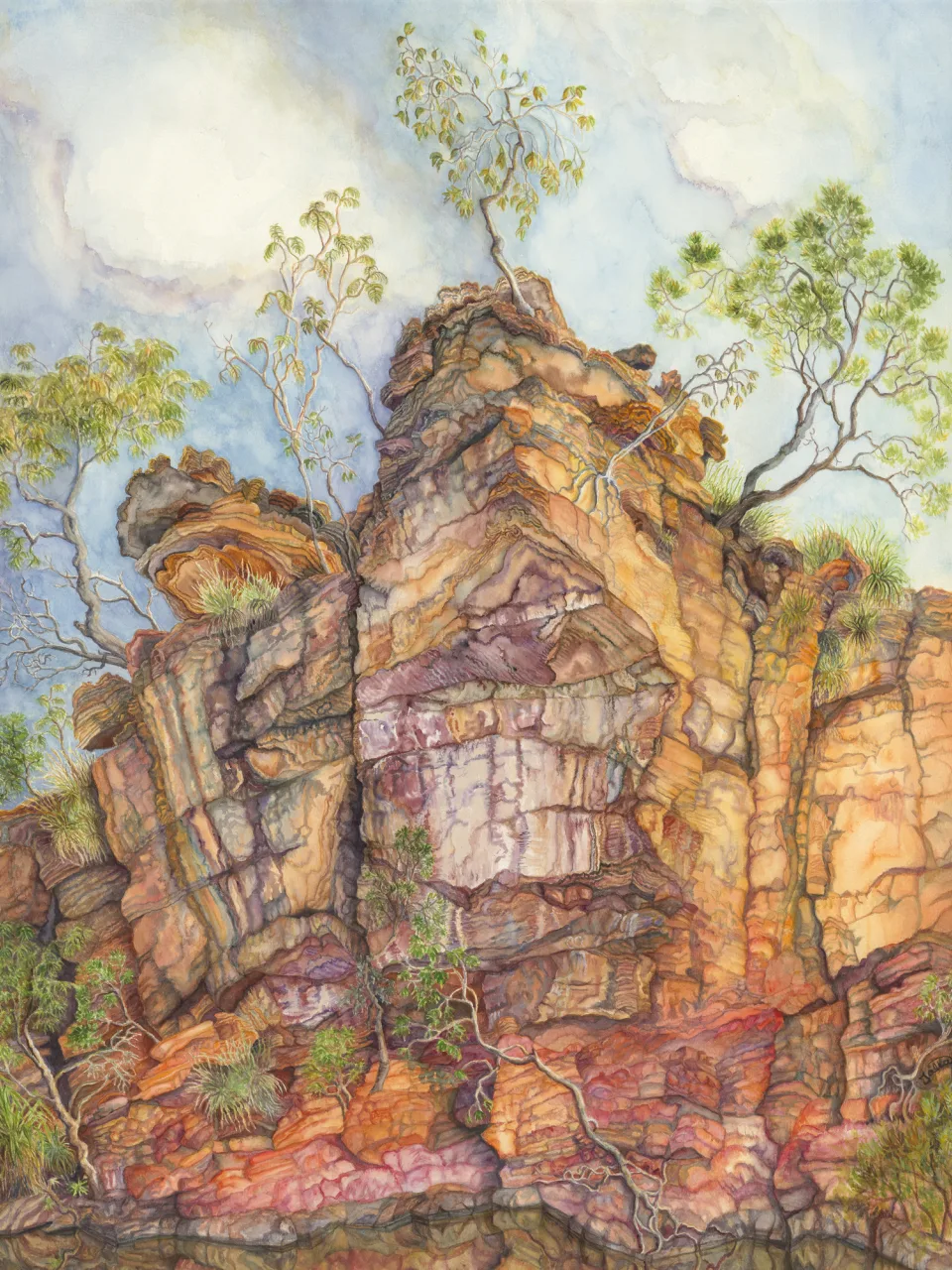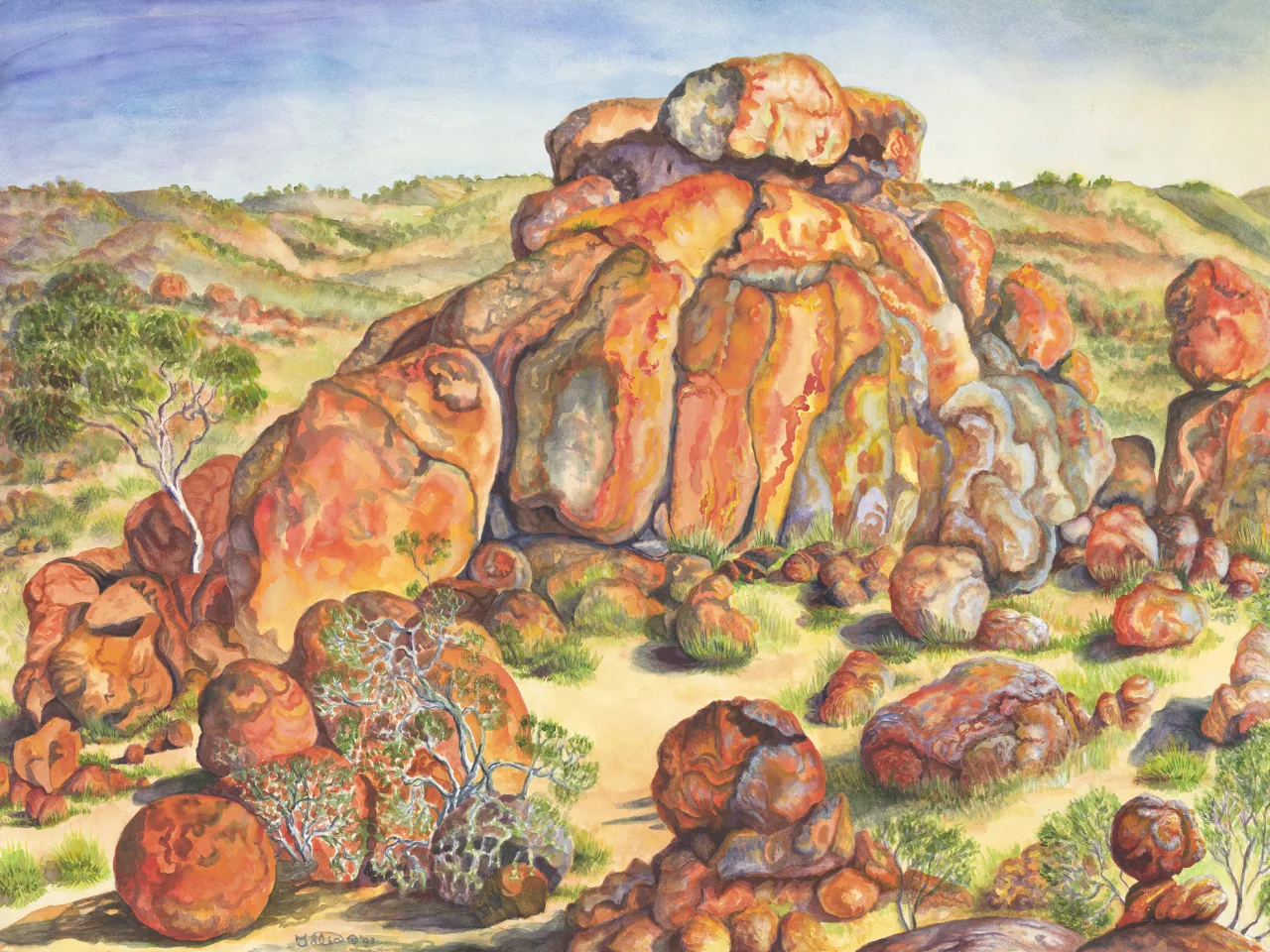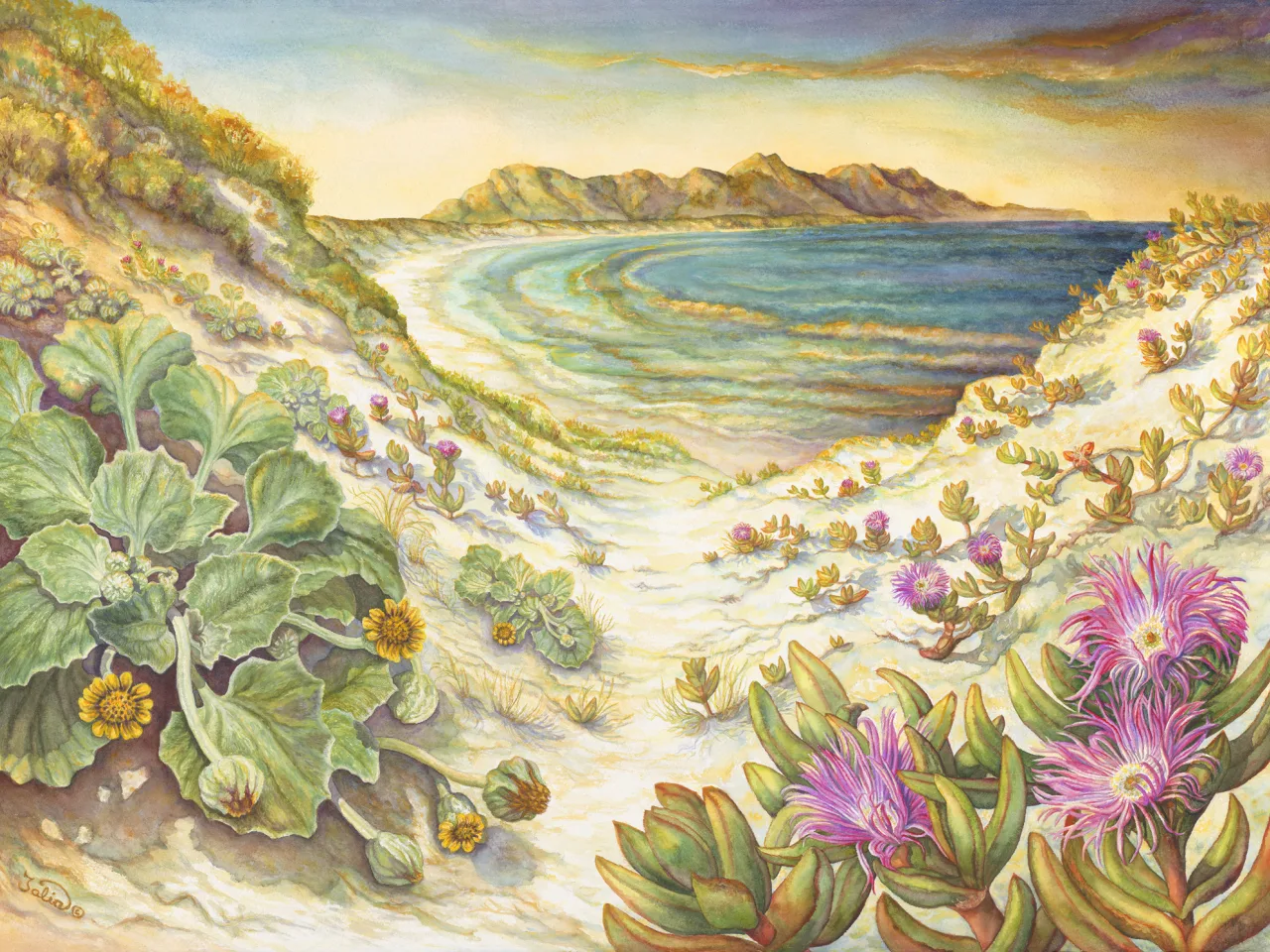Artwork 59 Ellery Quintet: A Year in the Life of a Desert Oasis. V—The Big Hole that Never Dries Up, and its Flora
Section 30
A Year in the Life of a Desert Oasis—Ellery Quintet
Ellery Creek, Tjorita / West MacDonnell National Park, Northern Territory
- 1. Indigofera basedowii (showy indigo)
- 2. Senna artemisioides subsp. filifolia (desert cassia)
- 3. Typha domingensis (bulrush)
Artwork 59
Buy a print
Limited edition giclee archival quality print on 310 gsm Ilford cotton rag (from an original work in watermedia on watercolour board, 71 cm high x 51 cm wide)
from the artist
Plunging into the deep, cool waters of Ellery Creek Big Hole on a 40 degree day in Central Australia brings sheer joy to overheated bodies. Gazing upwards at spectacular red-orange cliffs colourfully splashed blue-green with cypress pines and cycads can evoke a sensation of time passing—very, very slowly.
We were told by a ranger that no one really knows the depth of the “Big Hole”. In living memory it has never dried up—hence the title for this painting.
In this artwork it is late afternoon, with a slowly setting Sun. River red gums surrounding the waterhole display ghostly white trunks and blue-green silvery leaves. Behind them tower magnificent red-orange quartzite cliffs, on both sides of Ellery Gap. This rugged Heavitree Quartzite was once thick layers of quartz-rich sand laid down in vast shallow seas which covered much of Central Australia 850 mya–750 mya (Thompson, 1995, p. 68).
To left foreground are “showy indigo” flowers (Indigofera basedowii). They belong to the Fabaceae (pea) family. Indigofera is the genus which provides the blue dye indigo. However Australian indigos (and about 12 species are found in Central Australia) do not produce a useful dye (Urban, 1990, pp. 94–96).
In the centre foreground of the artwork are bulrushes (Typha domingensis) and in the right foreground are “desert cassia” (Senna artemisioides subsp. filifolia).
